|
Me Sahyadri |
|
December 2018 |
|
Volume 5, number 23, # 77 |
|
Mysteries of Koyna Valley – Digewadi Caves |
Please use minimum 1280 pixel horizontal screen resolution for viewing. Please be patient while all the images in webpage are loaded. Please do not use the images for any commercial use without permission. Text in Marathi and English is not exact translation. Please give sufficient time to allow the photographs to load. Special thanks to all those who helped me during the compilation and for the help and guidance during the activity. |
|
|
|
|
देशाची आर्थिक प्रगती व्हावी असे सर्व नागरिकांना वाटणे सहाजिक आहे. अर्थकारणामुळे मिळणारा रोजगार, समृद्धी यासाठी सर्वांनाच आर्थिक प्रगती हवी हवीशी वाटते. आर्थिक प्रगती होताना, त्याचा दिर्घकाळात समाजावर, निसर्गावर, वातावरणावर दुष्परिणाम होणार नाही याची काळजी घेणे महत्वाचे आहे. मनुष्याच्या भावी पिढ्यांना पाणी, शुद्ध हवा, योग्य वातावरण मिळत रहावे अशी भावना मनात रुजणे महत्वाचे आहे. वाढत्या आर्थिक प्रगतीमुळे नैसर्गिक संपदेवर ताण येतो. प्रगतीसाठी प्रदुषण होते. जंगले, माळराने, व इतर अधिवास नष्ट होतात. वसुंधरेवर रहाणाऱ्या इतर जीवांचा मात्र मनुष्य फारसा विचार करत नाही. आर्थिक प्रगती करताना, मनुष्य निसर्गाची हानी करत आहे. मुळताच माणसाला निसर्गाचे महत्व समजणे हे सध्याच्या आपल्या प्रगत जीवनशैली मुळे अवघड झाले आहे. आर्थिक प्रगती, समाजाची प्रगती व निसर्ग संपदेची निगा, यांचा समतोल राखणे काळाची गरज आहे.
सह्याद्री (पश्चिम घाट) हा एक नैसर्गिक संपदेचा, वैविध्यतेचा, भौगोलिक व ऐतिहासिक ठेवा आहे. वाढत्या मानवी अतिक्रमणाचा, सह्याद्रीच्या विविध घटकांवर होणारा दुष्परिणाम भविष्यात आपल्यालाच धोका निर्माण करेल, यात शंका नाही. शुद्ध पाणी, हवा व उर्जा, भावी पिढीला मिळण्यासाठी, नंद्यांचे उगम असलेला सह्याद्री व त्याभागातील जंगले टिकवणे महत्वाचे आहे. सह्याद्रीच्या महत्वाच्या घटकांचे महत्व छायाचित्रांद्वारे प्रकट करण्याचा मी येथे प्रयत्न केला आहे. येथील पक्षी, प्राणी, वनस्पती, अधिवास, किल्ले व लेणी अशा विविध विषयांबद्दल आपण समजुन घेऊ.
|
|
As the economic development has taken the center stage, the balance between the environmental sustenance and socio economic development will be under the scanner. As most experts with balanced views have proclaimed, Indian wildlife and ecological system sustenance will be under threat, unless precautions are taken with the help of appropriate research and long term national interests. As we encounter the economic development, many habitats which indirectly or directly help sustainable development will be damaged. The awareness to gauge the success by sustainable development and not by year to year growth is a distant dream any environmentalist will assume in current scenario.
Western ghats, or Sahyadri as we all call it as, is a treasure trove of spectacular landscapes, biodiversity, flora, fauna, some amazing geological wonders and man made monuments. With the increasing pressure from human encroachment, all these elements are under stress and in turn are under depletion. Western ghats should be left untouched by human beings, to protect their future generations from getting short of resources, such as water, energy and clean air. The important elements of western ghats, which need protection are highlighted in the new version of Photo journal, Me Sahyadri Magazine.
|
|
|
| |
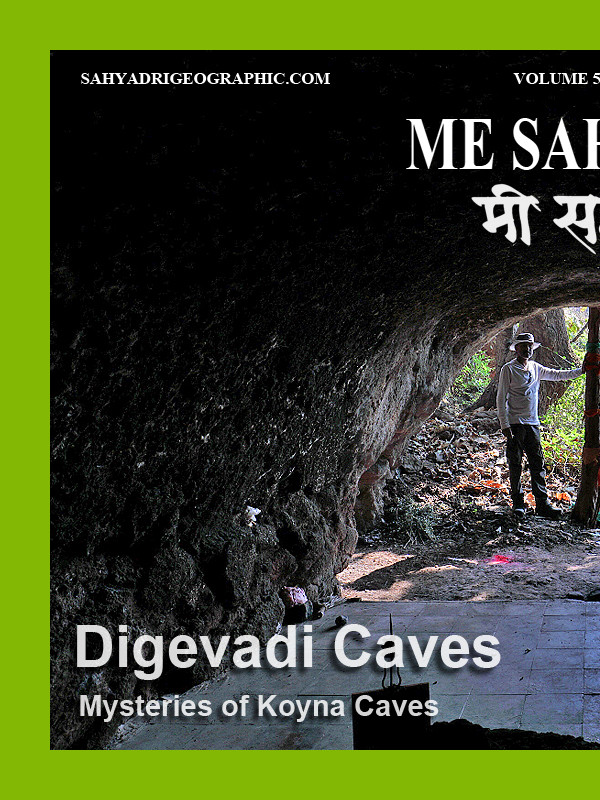 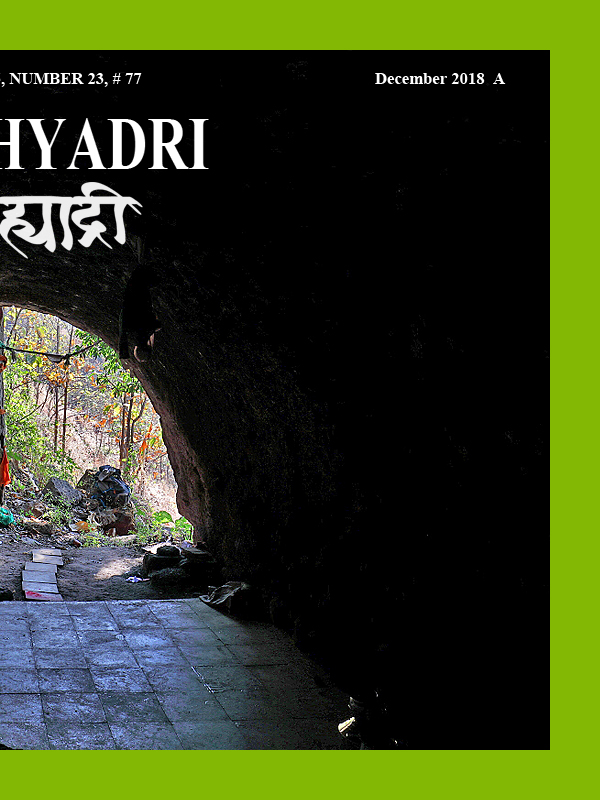
|
| |
| Me Sahyadri – December 2018
|
| |
|
|
कोयना खोरे लेणी मोहेमेचा सारांश :
मावळातील भाजे, बेडसे आणि कार्ले लेणी अप्रतिम आहेत. त्यामुळे या भागातील इतर लहान लेण्यांकडे फारसे कोणी फिरकत नाही. आम्ही चार समविचारी मित्रांनी मात्र या हरवलेल्या लेण्यांची शोधाशोध करण्याचे ठरवले. एकोणीसाव्या शतकात जेम्स बर्जेस आणि जेम्स फर्ग्युसन या दोन इंग्रज विद्वानांनी भारतातील लेणी धुंडाळली होती. त्यांनी १८८० साली "केव्ह टेम्पल्स ऑफ इंडिया" या पुस्तकाचे प्रकाशन केले. या पुस्तकात मावळातील लहान लेण्यांचा फारसा तपशिल नसला तरी, या मावळातील इतर लहान लेण्यांबद्दल ५-६ वाक्यांमध्ये आम्हाला त्रोटक का होईना माहिती मिळाली. त्यांनी उल्लेख केलेली, काही ठिकाण सापडली, तर काही ठिकाण काहीही केल्या सापडेनात. कदाचित न सापडलेली ठिकाण नष्ट झाली असावीत.
ग्रामीण मावळ लेणी शोध मोहिमेच्या धरतीवर आम्ही कराड जवळ असलेल्या अल्प परिचित लेण्यांना भेट देण्याचे ठरवले. मावळ लेणी मोहिमेतील अनुभवाचा उपयोग कोयना भागातील लेणी धुंडाळायला उपयोग झाला. आमच्या संघात विवेक काळे, अमेय जोशी, जितेंद्र बंकापुरे, साईप्रकाश बेलसरे, मिलिंद लिमये आणि निनाद बारटक्के असे हुरहुन्नरी भटके सामिल झाले. बाळासाहेब येळवंडे या माझ्या मित्राची आणि पोफळीच्या सदफ कडवेकर ची मदत मिळाली.
शोध मोहिमेत लागणाऱ्या खाऊची सोय करणे, विषय आणि ठिकाणाचा आधी अभ्यास करणे, प्रवासाची सोय करणे, गावकऱ्यांकडे लेण्यांबद्दल चौकश्या करणे, मोहिमे दरम्यान गचपणातुन वाट शोधणे, लेण्याच्या अवशेषांची चित्रे/नकाशे काढणे, छायाचित्रे काढणे, जि. पि. एस. यंत्रावर वाटेबद्दल माहिती नोंदवणे, लेण्यात लहान बारकावे शोधणे, लेण्यांचे विश्लेषण करणे, नोंदी करणे, अशी वेगवेगळ्या प्रकारची काम वाटुन घेण्यात आली. प्रत्येक ठिकाणी जाताना, घरचा अभ्यास करावा लागला. जुनी पुस्तके, नकाशे धुंडाळले गेले. गावातल्या मित्रांची मदत झाली. गावागावात चौकश्या केल्या. गडद, लेणे, गुहा, कपार, भोगदा, विहार, पांडवांनी एका रात्री बनवलेली गुहा असे अनेक शब्द वापरुन चौकश्या झाल्या. बकऱ्या, गाई घेऊन डोंगरात फिरणारे गुराखी मात्र दरवेळेला मदतीला धाउन आले. वाटांचे आणि दिशांचे अंदाज मिळाले. जुजबी माहिती घेऊन ठिकाण शोधणे या प्रकाराचा चांगला सराव झाला.
कधी काटेरी करवंदींच्या खालुन खुप सरपटाव लागल तर कधी घसाऱ्यावर हात टेकावे लागले. लेण्यांमध्ये मोठे कोळी (स्पायडर), कातळ पाली, वटवाघळ, मधमाश्या, पाकोळ्या, घुबडं भेटले. आमच्या मुळे त्यांना उगाच त्रास झाला, असा अपराधीपणा वाटला. बहुतांश ठिकाणी कोणत्या ना कोणत्या प्रकारची जोखिम होती. वटवाघळ, लेण्यातील धुळ, काळोख, मधमाश्या, काटेरी वनस्पती, घसारा, गुहेतील ऑक्सिजन चा अभावआणि इतर न दिसणारे धोके यावर मात झाली. मोहिमेसाठी, विजेऱ्या, जि. पि. एस., मोजपट्या, दोऱ्या, लेजर यंत्र, नकाशे, गुगल मॅप, जाळीच्या टोप्या या सर्व जंत्रीचा उपयोग झाला. एकूण मिळुन नविन अपरिचित ठिकाण/वास्तु पहायला मिळाल्या, कोयनेचा भुगोल जरा अजुन नीट लक्षात आला. नविन प्रश्न पडले आणि नविन कोडी सोडवयाला मिळाली. तर्क वितर्क झाले.
|
|
About the Koyna Valley Cave exploration :
For last few years we have been exploring the MAVAL region od Pune district in search of ancient rock cut caves. Most of the caves are known and studied in depth by several researchers. While revisitng some of the lesser known rock cut caves we observed many new aspects of these caves which have been overlooked. At few places new rock cut caves were noticed which are not recorded in academic literature. We explored and found few beautiful places. The very concept of creating a hermit cave somewhere high up in the hills is fascinating. These places often are full of tranquility and nothing else. With very little architectural evidences and clues, the academicians have obviously ignored these places. It was James Fergusson and James Burgess, during their exhaustive study of “Cave temples of India, 1880” mentioned few of these hermits in Maharashtra.
With the little clues and exhaustive investigation, team of five members, Saprakash Belsare, Amey Joshi, Ninad Bartakke, Jitendra Bankapure and Vivek Kale started the exploration. The journey to locate, trek and analyse these hermit caves itself was fascinating. We met many villagers who were unaware of these places, but also met few shephards who were precisely aware of the hermits and gave us tentaive guidance. In line with Maval cave exploration, we visited Koyna valley for its recorded but less known rock cut caves. There is a very brief mention about the misceleneous caves of Maharashtra by James Fergusson and James Burgess in their work. Based on available information we decided to search these caves and monuments. The activities were planned. The food, travel , track exploration in difficult and routes full of foliage, enquiring the villagers about the caves, drawing skecthes and maps, photography, GPS data collection, making notes and analysing the information, observing the minor details of the caves etc activites were distributed amongst the team members.
We met many bats, owls, geckos, lizards, large spiders, martins, honeybees during the treks. Often we felt sad that we disturbed them to see the caves. Most of these places are hazardous due to pitch darkness, bats, dust, thorny plants, honeybees, low oxygen level in caves and rock patches etc. The high intensity torches, GPS tool, measuring tapes and measuring laser tool, Honeybee protection caps, maps, google maps, photographs etc were useful during the mission. In this photoessay, I have compiled the information and photographs of Digewadi caves, in Koyna Valley. cave complex.
|
|
|
| |
  |
| The banner has been published here to improve the awareness of the trekkers and tourists visiting the various mountain forts, mountains in north western ghats. Please avoid accidents, by following good outdoor ethics such as no swimming in cisterns at mountain forts, no rock climbing without proper technical equipment and expertise. Please do not adventure, trek with any group or individually without understanding the risks associated. The frequency of the solo trekker fatalities have increased recently. Please strictly avoid solo treks. Please also avoid treks to mountains in large commercial groups, as it leads to damage to biodiversity of these high elevation ecological islands. Please respect the wildlife and biodiversity of the region. This has become more important as the ever increasing human interference is leading to severe damage to fragile ecosystems. Please be aware of the wildlife and biodiversity of the mountains before visiting these mountains. Please follow outdoor ethics. Follow ASI and Forest department rules. The concept of use of symbols for outdoor ethics was conceived and designed by "Sahyadri Trekker Bloggers Group". |
| |
|
|
| |
 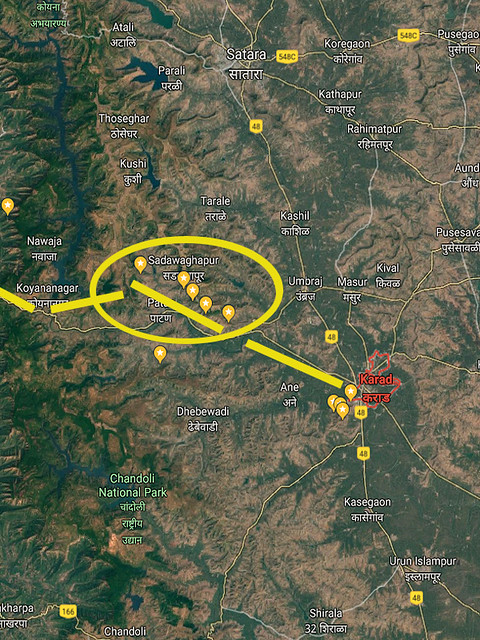 |
| |
| 1. Karad-Chiplun trade route Map, Maharashtra, India |
| |
|
|
| |
  |
| |
| 2. Map, Koyna Valley Caves, Satara district, Maharashtra, India |
| |
|
|
कोयना नदीचा उगम महाबळेश्वर येथे होतो. पुढे दक्षिणेकडे पण घाटमाथ्याजवळच कोयनानगर येथे या नदीवर धरणाची भिंत आहे. इथ पर्यंत उत्तर दक्षिण प्रवास करत आलेली कोयना नदी येथुन पुढे मात्र पश्चिम पुर्व अशी वाहु लागते. कोयनानगर ते कराड या पश्चिम पुर्व पठारी भागातुन जाताना या नदिच्या दोन्ही बाजुस म्हणजे उत्तरेला आणि दक्षिणेला डोंगररांगा आहेत. कोयना नदीच्या उत्तरेकडे असल्या डोंगररांगेत असलेल्या दिगेवाडी लेण्याची माहिती या सदरात मांडली आहे. सदर लेणी काळेवाडी गावाजवळ असलेल्या डोंगरात आहेत. प्राचिन काळी अंदाजे २००० वर्षांपुर्वी भारताचा व्यापार इजिप्त, ग्रीक राज्यांबरोबर होत असे. दक्खन च्या पठरावरुन वस्तु कोकणातील बंदरंपर्यंत पोहोचवल्या जात. तेथुन पुढे समुद्रमार्गे ब्यापार होत असे. कराड हे महत्वाचे व्यापारी केंद्र होते. येथुन माल कोकणापर्यंत चिपळुण आणि इतर ठिकाणाच्या खाड़्यांपर्यंत पोहोचत असे. या व्यापारी मार्गा च्या आजुबाजुला अनेक ठिकाणी बुद्ध लेणी पहावयास मिळतात.
|
|
Koyna river originates at Mahabaleshwar. It has very large dam built on it at koynanagar in Patan tehsil of Satara district. After Koynanagar the river flows towards east before it reaches Karad. This region of Koyananagar to Karad is here considered as Koyna valley. The river flows through a flat basin flanked by hill ranges on either side of it. In this photoessay, one of the caves on the northern side hill range is discussed. Out of six lesser known caves in this northern hill range facing Koyna, Digewadi is the most less visited rock cut cave. The caves are located near the village Kalewadi near Digewadi.
In ancient India about 2000 years back India used to trade with other western civilisations such Persia, Greece and Egypt. The trade used to be carried out by road from Deccan plateay through a trade center till the ports on west coast. The goodswere then transported through sea route to Egypt, Greece etc. The land route from deccan plateu to west coast was decided based on the convenience. Karad was important trade center on the deccan plateau. The goods were transported from Karad to Chiplun and other Konkan ports through Koyna valley and the pass through the wetsern ghats. Hence many buddhist caves can be seen around the Koyna valley due to this trade route from Karad to Chiplun.
|
|
|
| |
  |
| |
| 3. Aerial Map, Koyna Valley Caves, Satara district, Maharashtra, India |
| |
|
|
| |
  |
| |
| 4. Layout – Digewadi Caves, Satara district, Maharashtra, India |
| |
|
|
कोयनानगर-कराड रस्त्यावर काळेवाडी नावाहे एक लहान गाव आहे. या गावाजवळच्या डोंगरात दिगेवाडी लेणी आहेत. गावातल्या कच्च्या रस्ताने आम्ही चौकशी करत गावाच्या मागच्या बजुला गेलो. येथुन पुढे कच्च्या रस्त्याने डोंगरपायथा गाठला. दगडांच्या खाणींजवळ गाडी लावुन पुढे चालत डोंगराच्या एका लहान नाळेजवळ आलो. मी इथे पुर्वी आलेलो होतो. पहिल्या भेटीत मात्र मला जि. प. एस. यंत्रणेचा वापर करुन लेणे शोधावे लागले होते. एका शोध निबंधातुन या लेण्याचे जि. प. एस अक्षांश रेखांश आकडे मिळाले होते. नाळेतल्या धबधब्याच्या उजव्या बाजुने डोंगरात केलेल्या शेत पायऱ्या पार करत आम्ही एकदाचे लेण्यासमोर पोहोचलो. झाडोऱ्यामुळे लेणी दुरुन दिसत नाहीत. येथे लेणी समुहाचे तीन भाग आहेत. मध्य भागी मुख्य चैत्यगृह आहे. त्यात महादेवाची पिंड आहे. डाव्या बाजुला (पश्चिमेला) एक विहार आहे. या विहारात दोन खोल्या आणि पडवी आहे. उजव्या बाजुला मोठा विहार आहे. या विहारात सात खोल्या आणि एक सभागृह आहे. ऐन धबधब्या जवळ असल्याने आणि वर्षों वर्ष दुर्लक्षित राहिल्याने लेण्यात वरुन आलेली माती भरलेली आहे. उंची पहाता अर्ध लेणे मातीखाली दबले गेले आहे. वर्षोंवर्ष पाण्यामुळ येथे धुप झाली आहे. विहारातील खोल्यांच्या भिंती पडल्या आहेत.
या लेण्यात कोणतीही मुर्तीकला नाही. एकुणच येथील वास्तुरचनेवरुन हे हिनायन लेणे आहे हे स्पष्ट आहे.
|
|
Kalewadi near Digewadi is a village on the Karad-Patan highway. The caves are located at about 50-60 meter altitude above the surrounding plateaue. After scrambling through the village small roads, we could reach very close to the base of the hill range on a rough road. From here it took hardly 20 minutes to reach the caves. The cave can not be seen from distance due to foliage. One can approcah cave from the right side of the stream. The caves are hidden up th hill and are south facing. This cave complex can be divided in to 3 sections. The main chaityagriha in the center. The vihar cave consisting of 2 cells with verandah are on the left (west side) of chaityagriha. Another larger Vihara cave consisting of 7 cells is on the right (east side) of chaityagriha. There is a opening in Chaityagriha wall through which one can access east side vihara cells. There is about 1 to 1.5 meter deep rubble in the entire cave complex. So one can see only the upper half of the caves which are still above the rubble. There is a waterfall outside the cave complex and the rubble with rain water must have got entered the cave complex over many years. Most of the walls in vihar caves are damaged due to the erosion over the years. The quality of rock here is brittle as is not as compact as one can see in Maval region caves such as Karle, Bedse etc.
Based on the architecture it is evident that this is a early Hinayan Cave.
|
|
|
| |
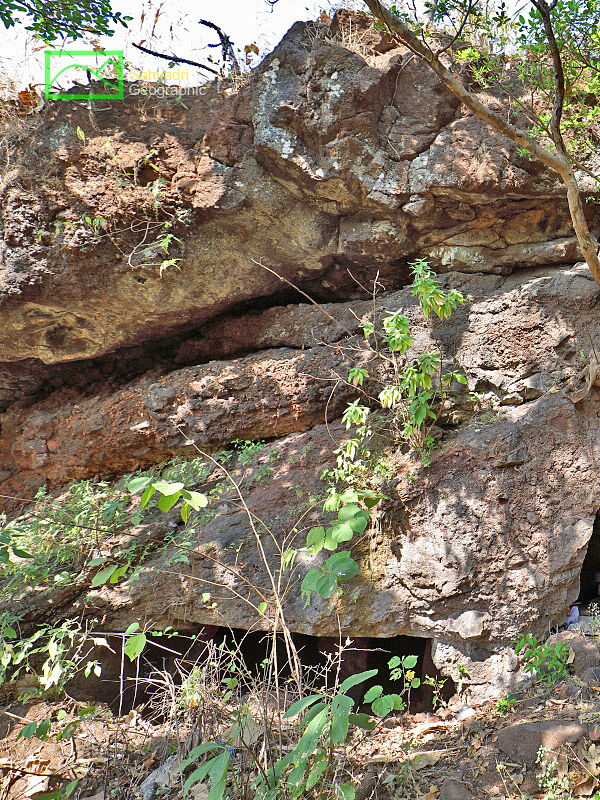 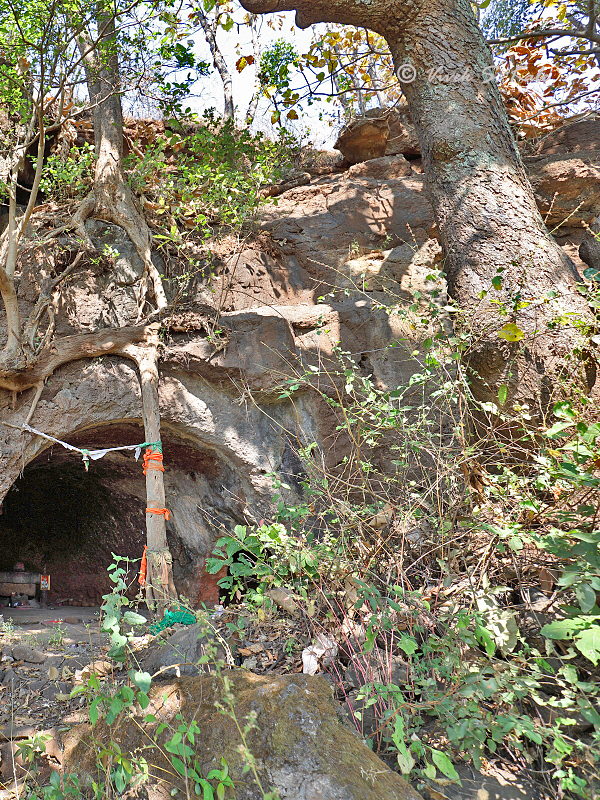 |
| |
| 5. Digewadi Caves, Satara district, Maharashtra, India |
| |
|
|
| |
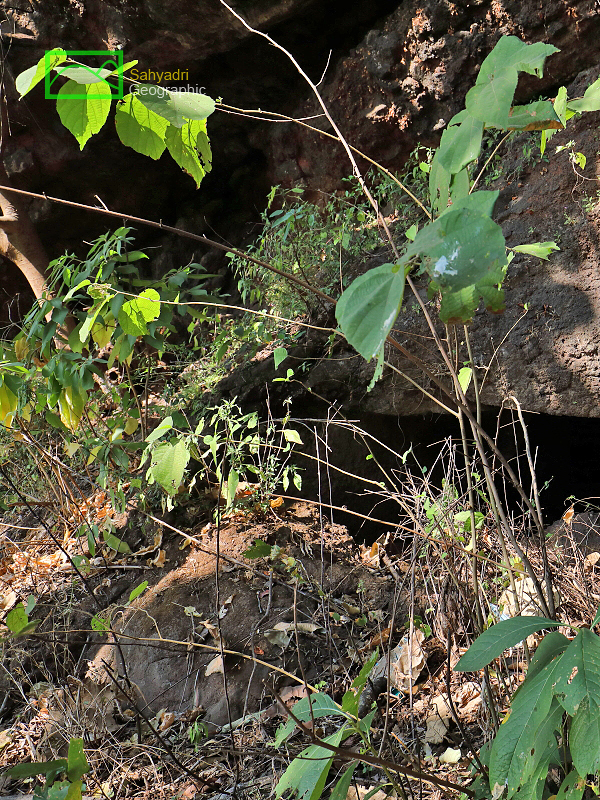 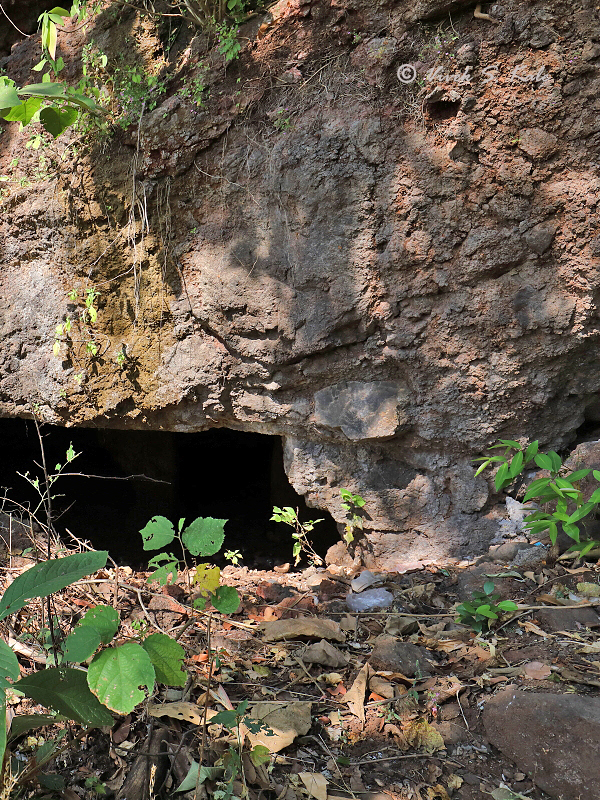 |
| |
| 6. Vihar under rubble, Digewadi Caves, Satara district, Maharashtra, India
|
| |
|
|
| |
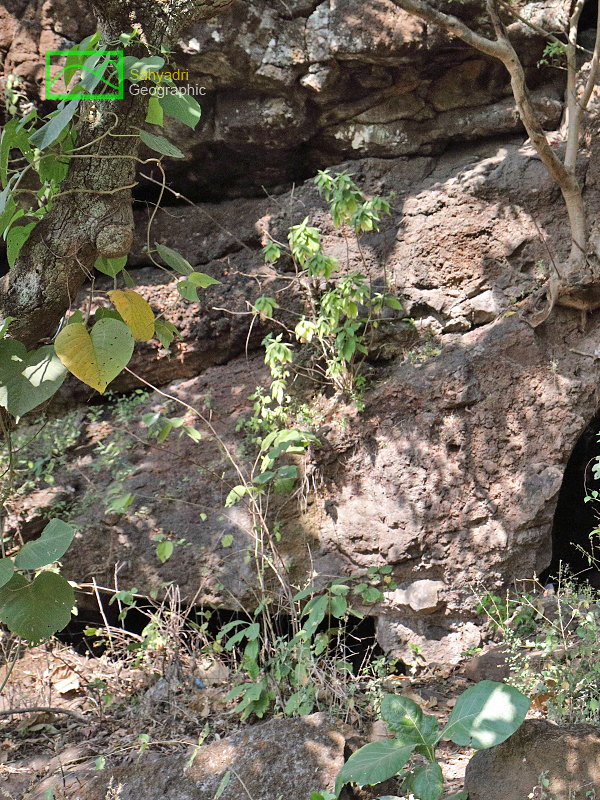 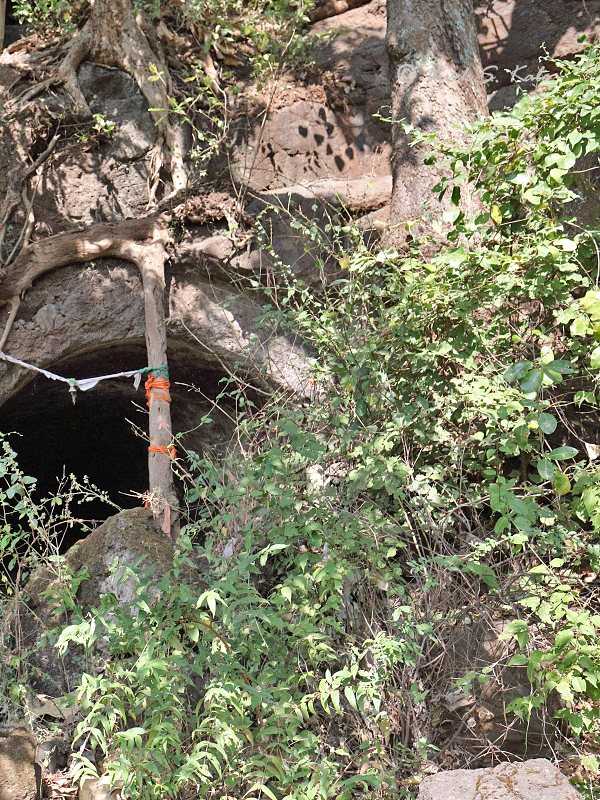 |
| |
| 7. Chaitygriha under rubble, Digewadi Caves, Satara district, Maharashtra, India
|
| |
|
|
| |
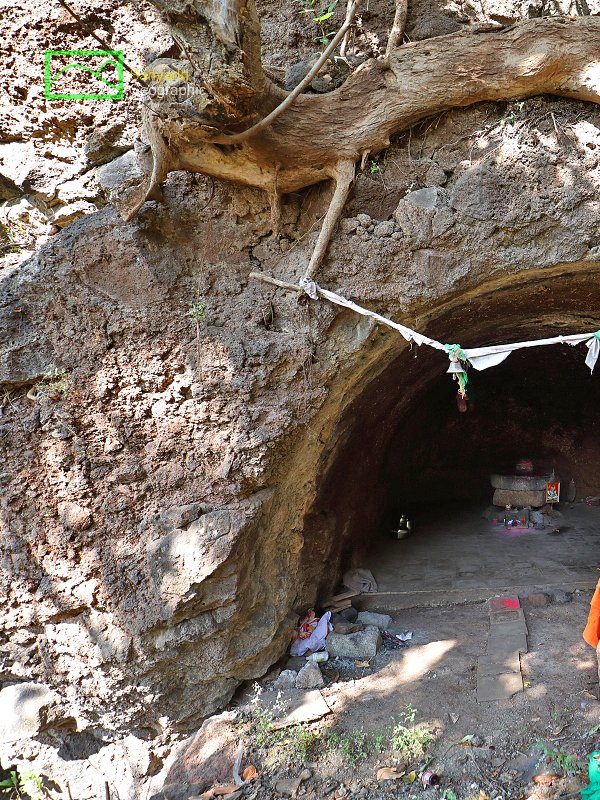 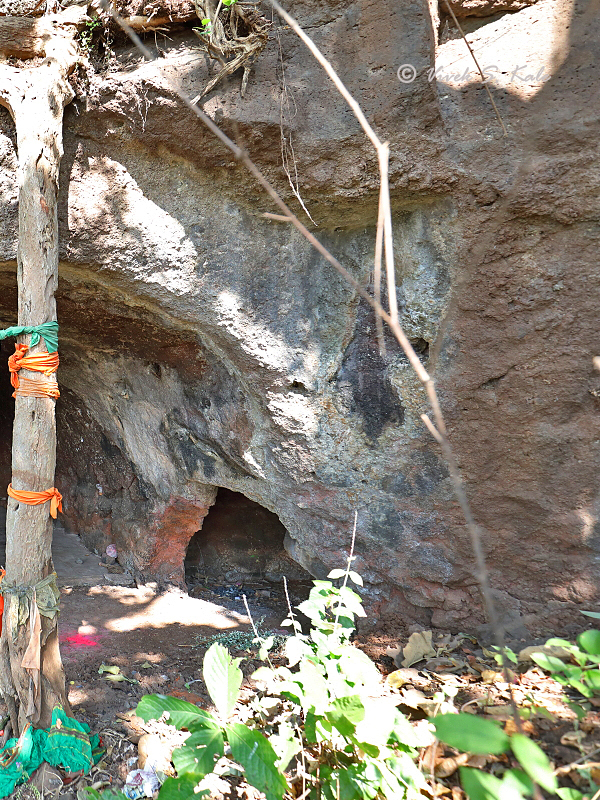 |
| |
| 8. Chaityagriha under rubble, Digewadi caves, Satara district, Maharashtra, India
|
| |
|
|
धबधब्याच्या जवळ मुख्य चैत्यगृह आहे. चैत्यगृहाची रुंदी अंदाजे ३.२ मीटर आहे. लांबी ७ मीटर आहे. तर उंची २.२ मीटर (सध्याची) आहे. खालचा भाग मातीखाली दबलेला आहे. त्यामुळे एकुण उंची अंदाजे ३.७-४.२ मीटर असावी. चैत्यगृहात महादेवाची पिंड आहे. पिंड एका दगडावर ठेवलेली आहे. दगड स्तुपावर ठेवलेला आहे. स्तुपाचा थोडासाच भाग जमिनीवर आलेला दिसतो. चैत्यगृहाचे छत गोलाकार आहे. चैतुगृहाच्या छतावर थोडे जुने प्लॅस्टर दिसते. चैत्यगृहात महादेवाच्या पिंडी व्यतिरिक्त २ लहान देवाच्या शिळा आहेत. चैत्यगृहात जमिनीवर फरश्या लावलेल्या आहेत. चैत्यगृहात खांब नाहीत. चैत्यगृहाची रचना पहाता या भागात हा चैत्य सर्वात जुना असावा असे वाटते.
|
|
The main chaityagriha has a apsidal curved roof, with vertical side walls. The height of the chaityagriha is very less. Also the Stupa is covered with rubble and only top part of stupa is visible. Atop stupa a Shivalingam is kept and is being worshipped by the local villagers. Based on some observations in this cave and other caves it is clear that the chaityagriha is filled with about 1.5 to 2 m rubble. The stupa is submerged in this rubbble. Refer Image 23 to see the tentative sketch of this submergence. The chaityagriha is about 3.2 meter wide and is about 2.2 meter (visible). The stupa must be about 1 to 1.5 meter in diameter, but as it is under rubble exact dimensions can not be realised. There are no side pillars in this chaityagriha. As this stupa has apsidal roof, it indicates the early date for this cave.
|
|
|
| |
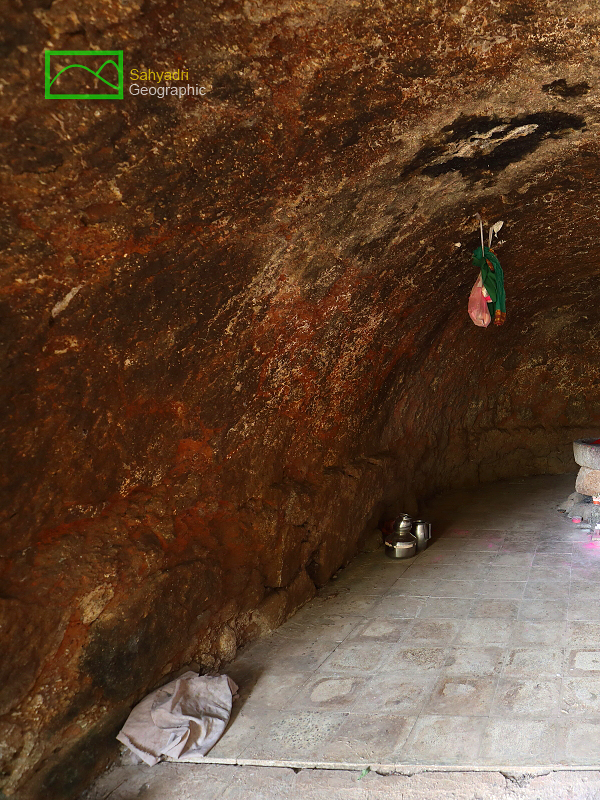  |
| |
| 9. Chaitygriha upper part, Digewadi Caves, Satara district, Maharashtra, India |
| |
|
|
| |
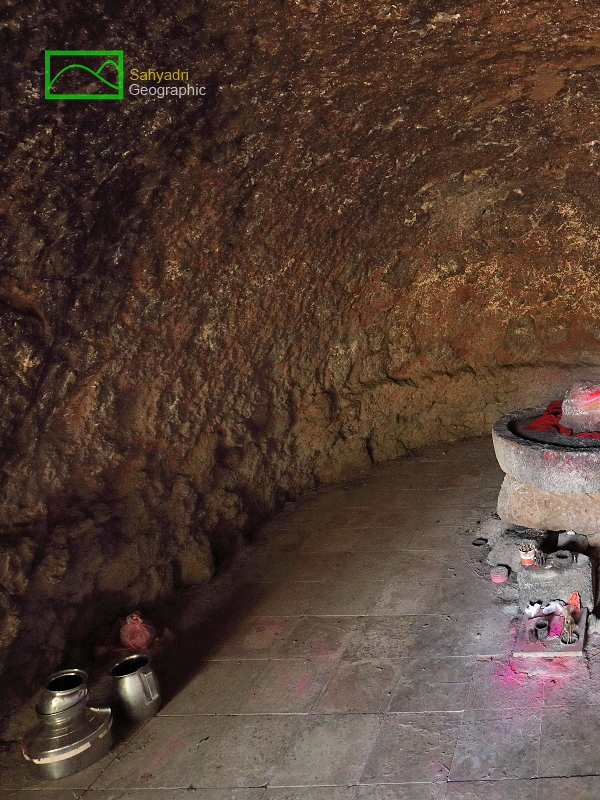 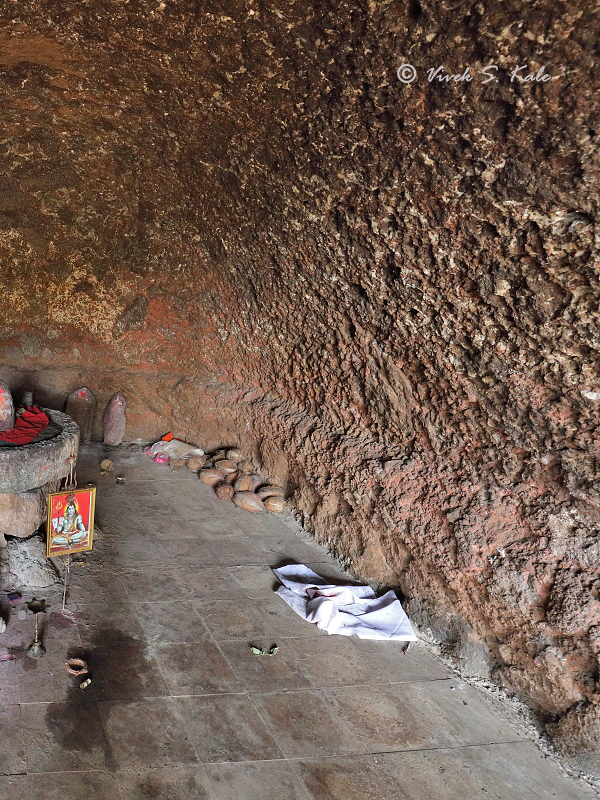 |
| |
| 10. Shivalingam, Chaityagriha, Digewadi Caves, Satara district, Maharashtra, India |
| |
|
|
| |
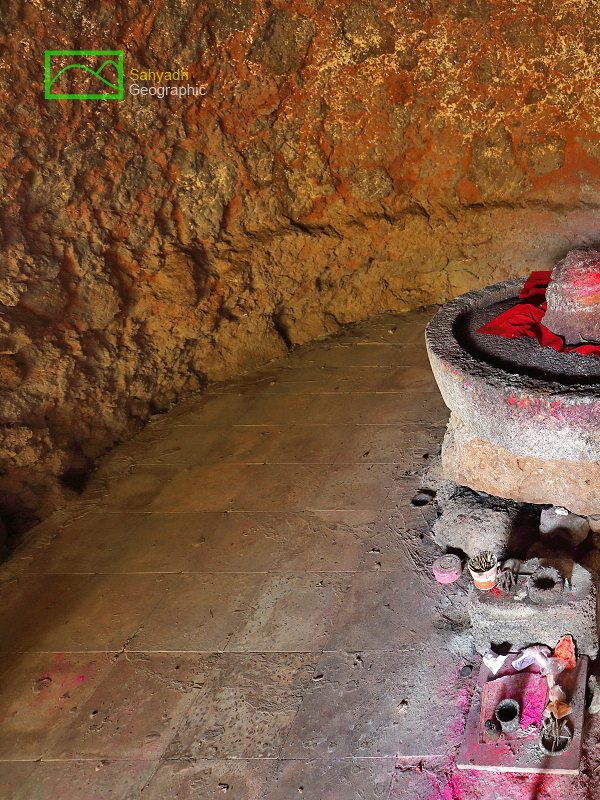 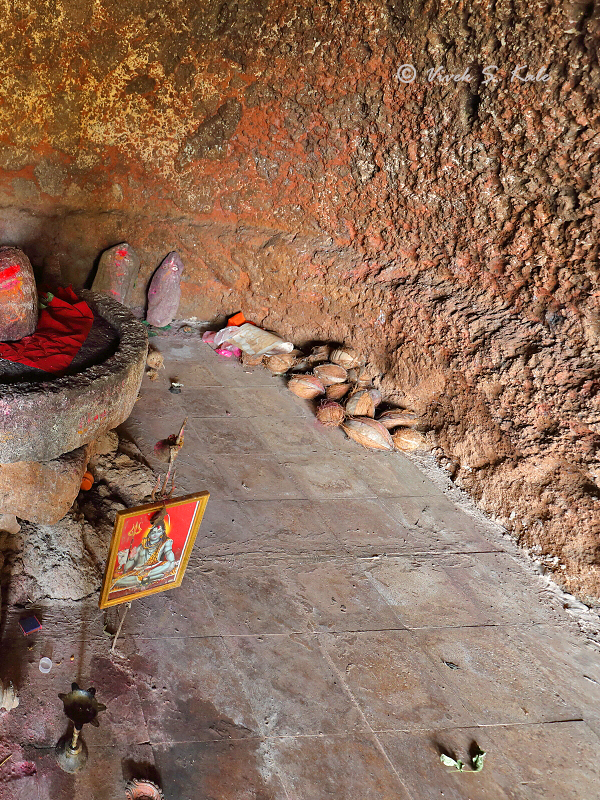 |
| |
| 11. Shivalingam, Chaityagriha, Digewadi Caves, Satara district, Maharashtra, India |
| |
|
|
| |
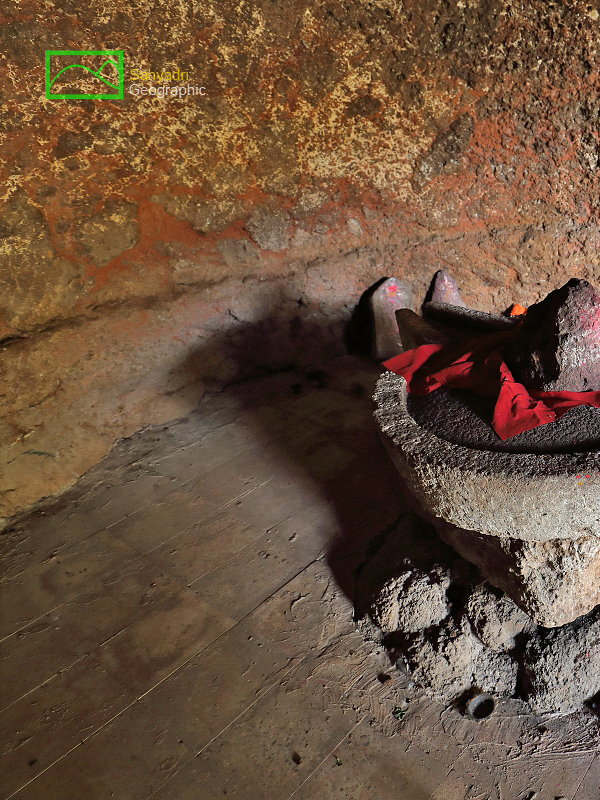 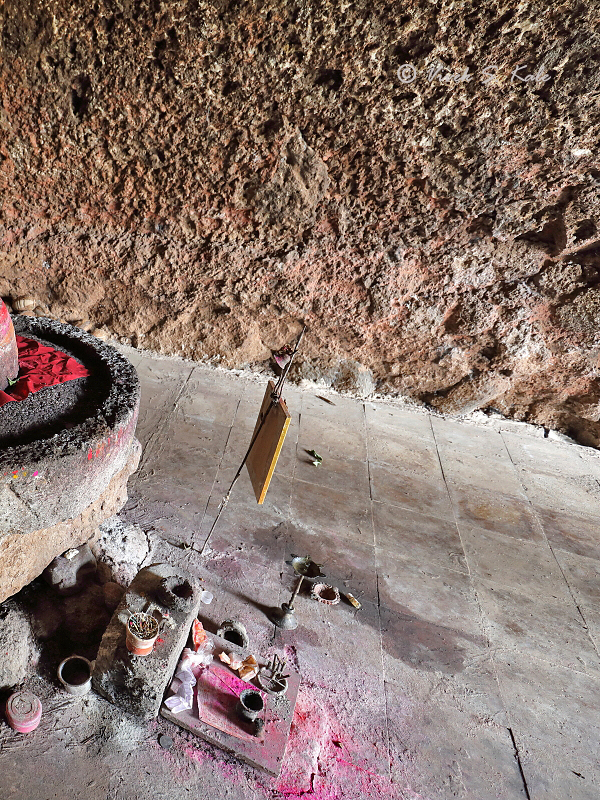 |
| |
| 12. Shivalingam atop under rubble Stupa, Chaityagriha, Digewadi Caves, Satara district, Maharashtra, India |
| |
|
|
| |
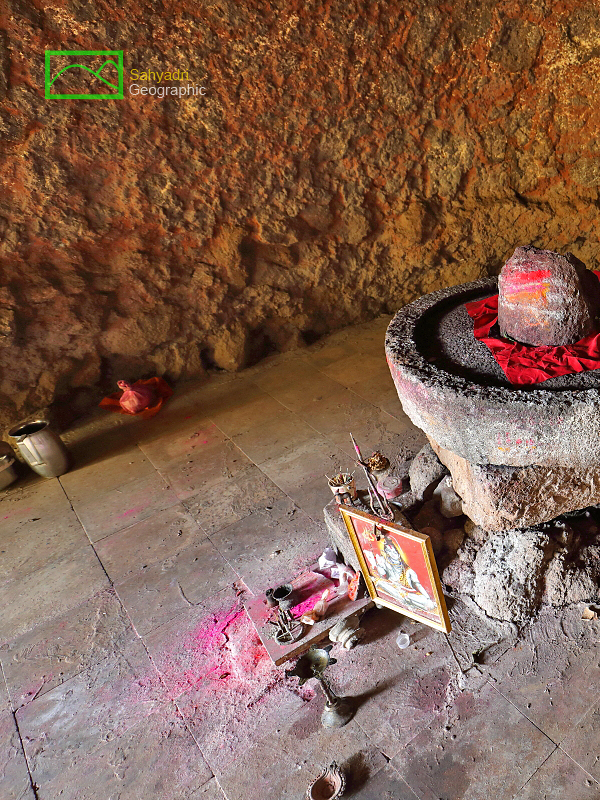 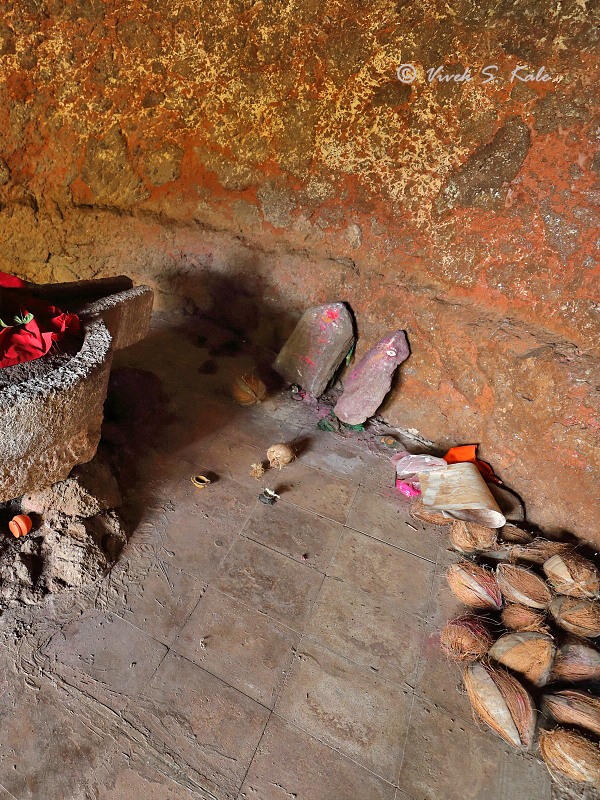 |
| |
| 13. Shivalingam, Chaityagriha, Digewadi Caves, Satara district, Maharashtra, India |
| |
|
|
| |
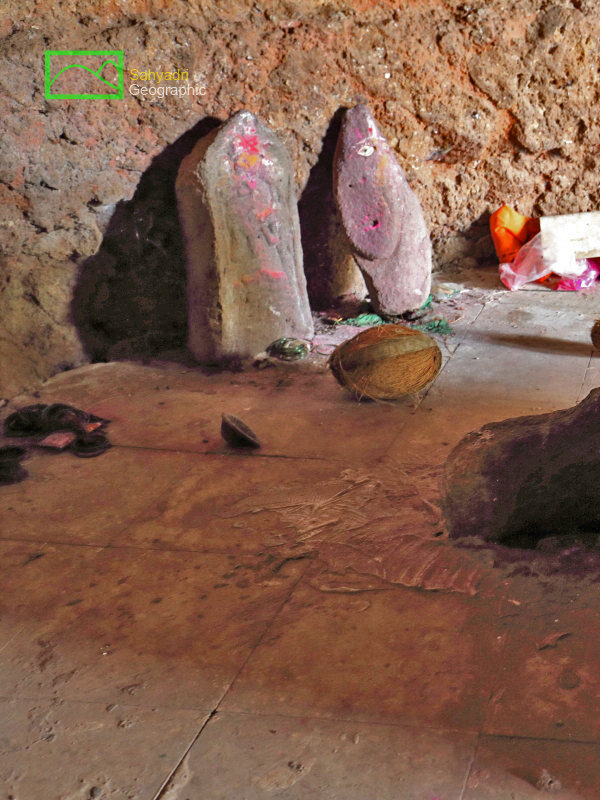  |
| |
| 14. Dieties, Digewadi Caves, Satara district, Maharashtra, India |
| |
|
|
| |
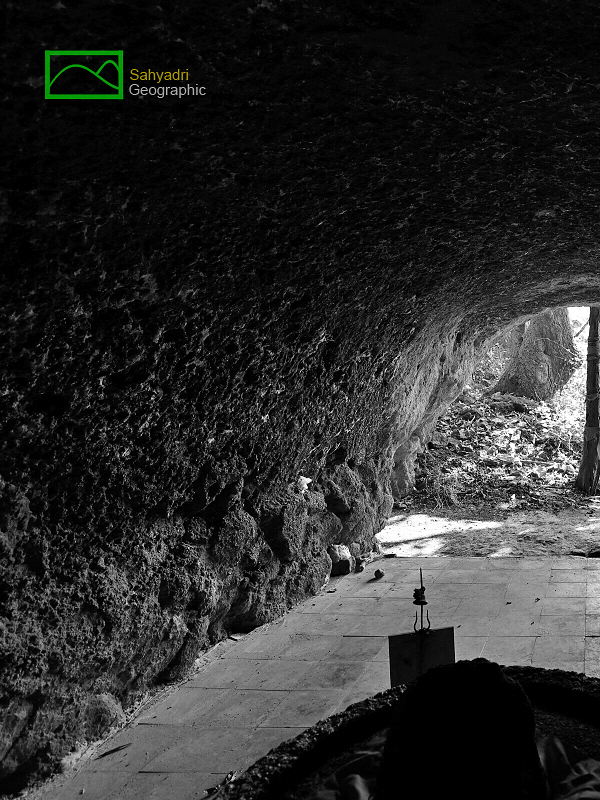 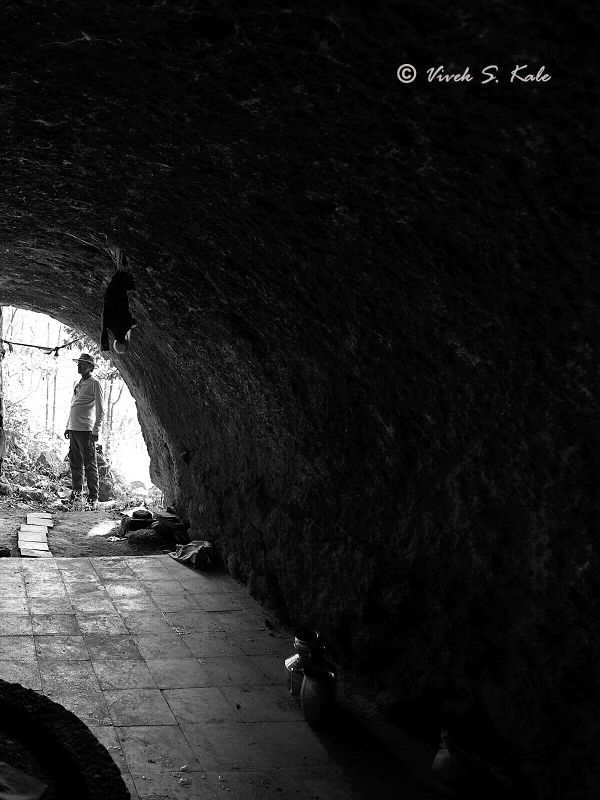 |
| |
| 15. Chaityagriha inside out, Digewadi Caves, Satara district, Maharashtra, India |
| |
|
|
| |
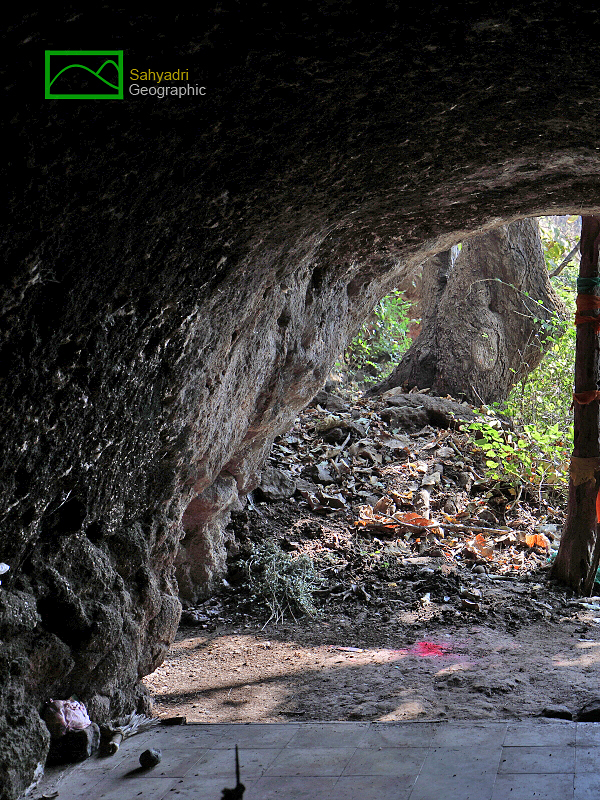 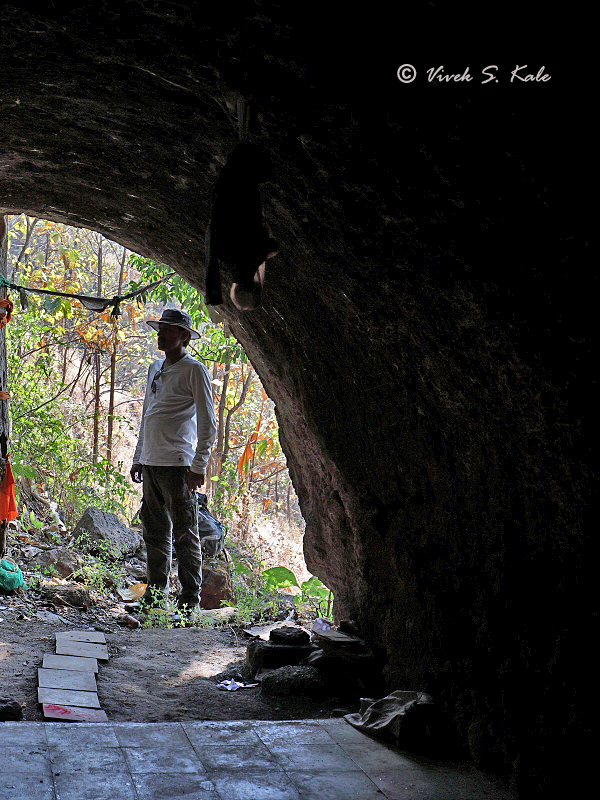 |
| |
| 16. Chaityagriha inside out, Digewadi Caves, Satara district, Maharashtra, India |
| |
|
|
| |
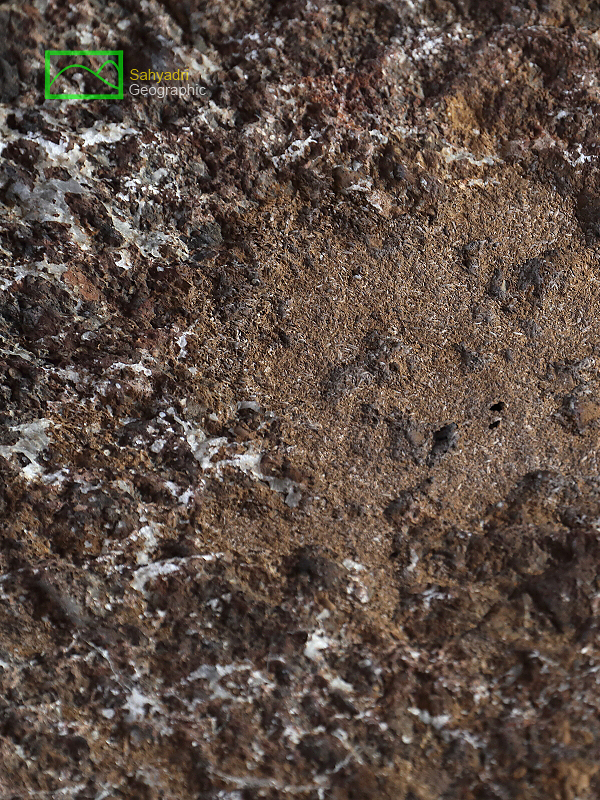 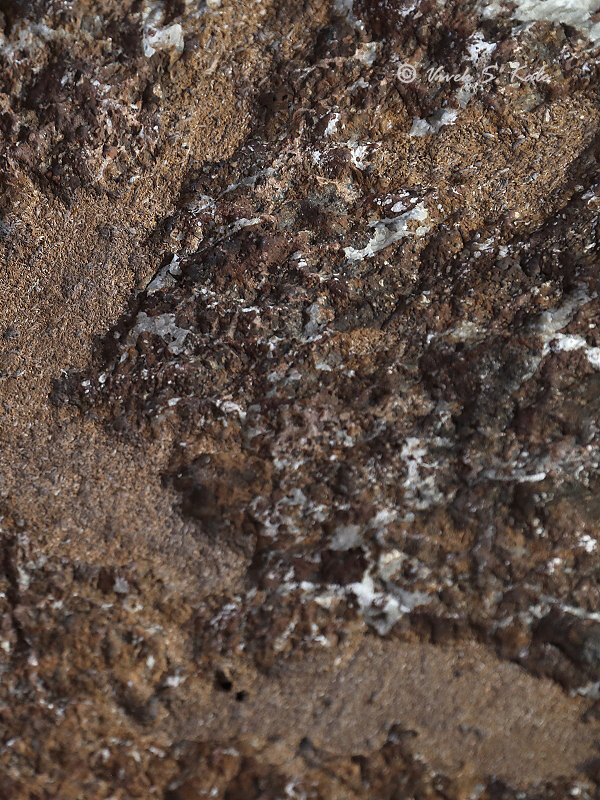 |
| |
| 17. Traces of plaster on roof ceiling, Digewadi Caves, Satara district, Maharashtra, India |
| |
|
|
| |
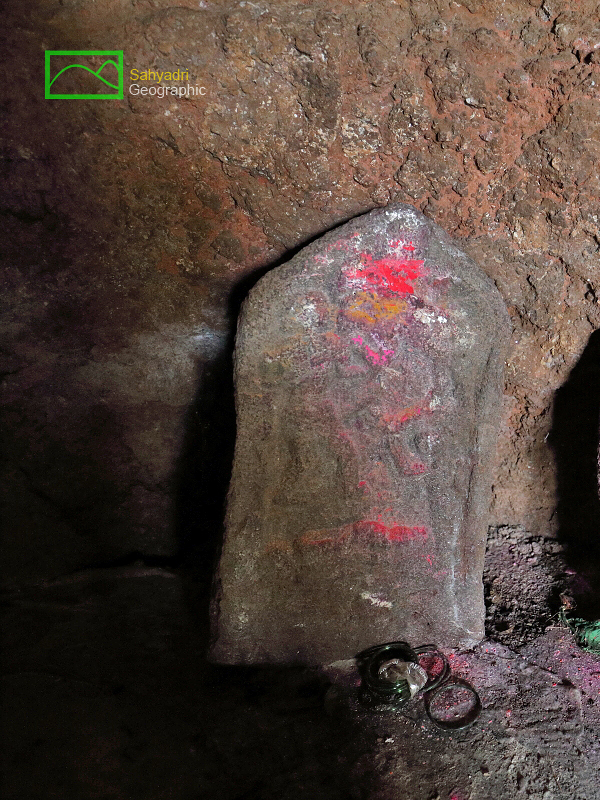 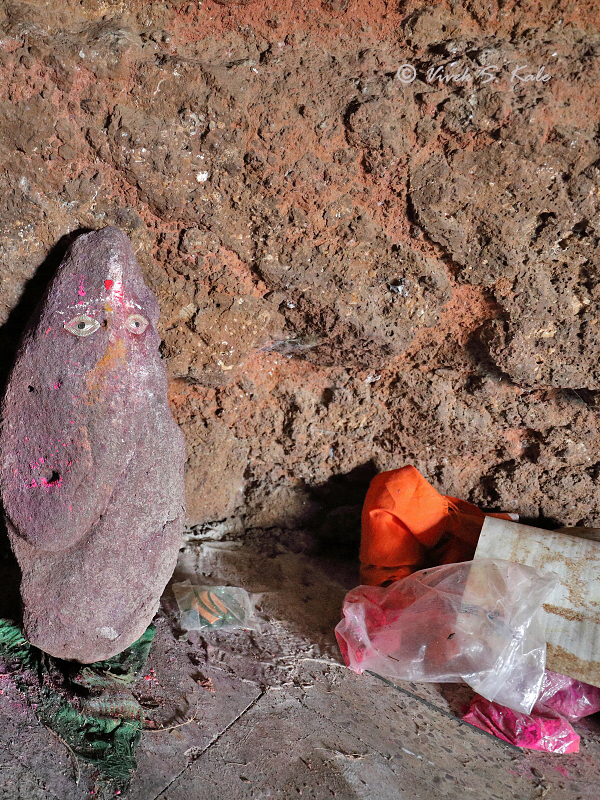 |
| |
| 18. Deities, Digewadi Caves, Satara district, Maharashtra, India |
| |
|
|
| |
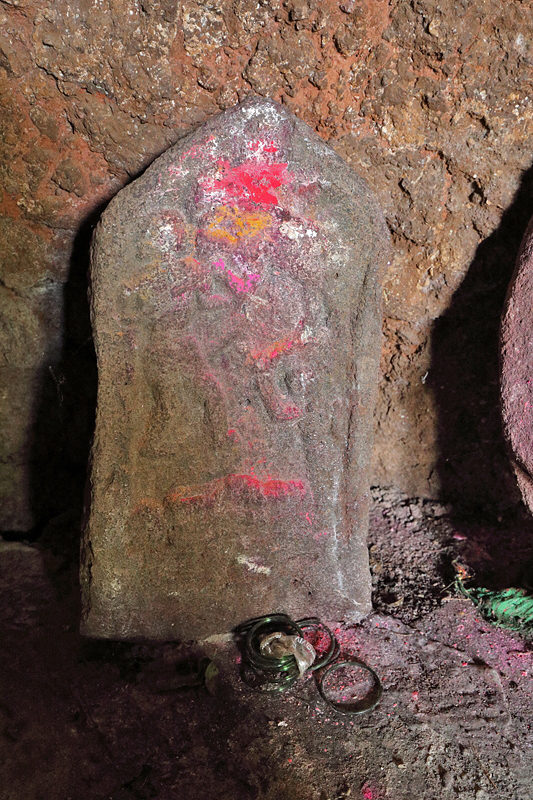 |
| |
| 19. Deities, Digewadi Caves, Satara district, Maharashtra, India |
| |
|
|
| |
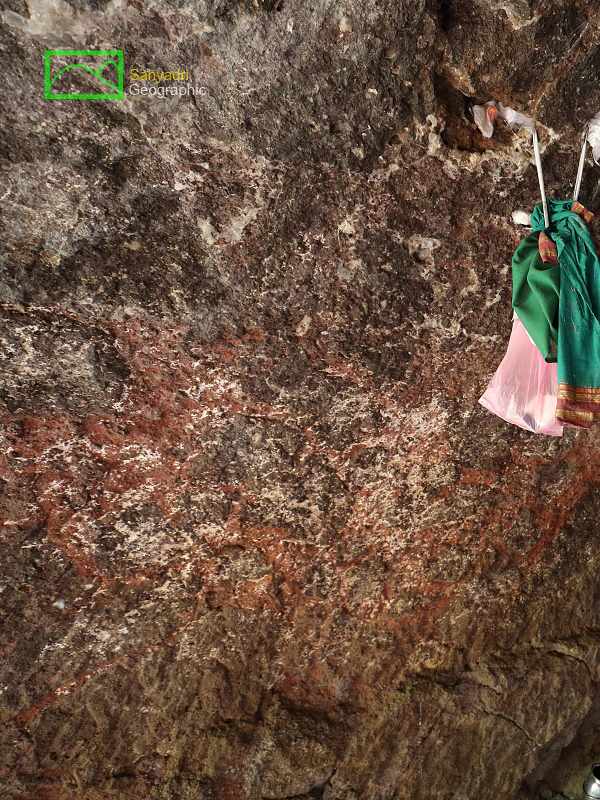 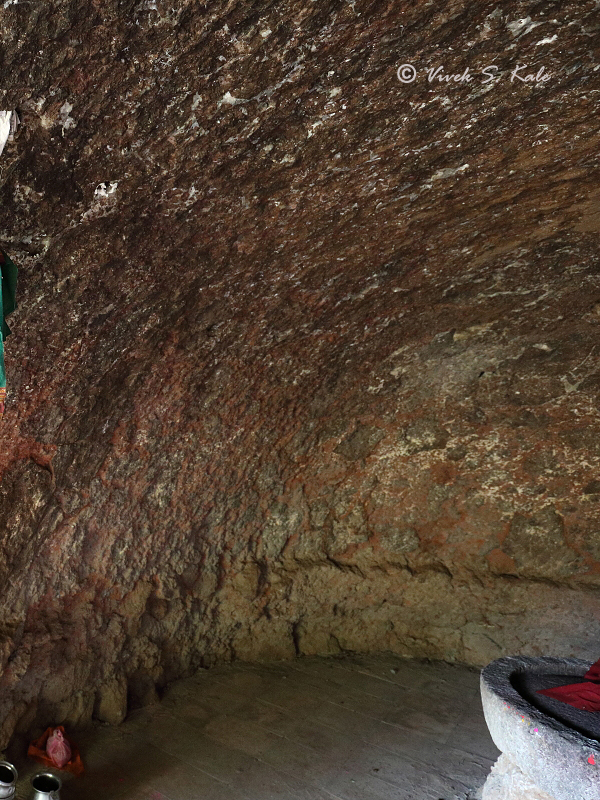 |
| |
| 20. Chaityagriha wall, Digewadi Caves, Satara district, Maharashtra, India |
| |
|
|
| |
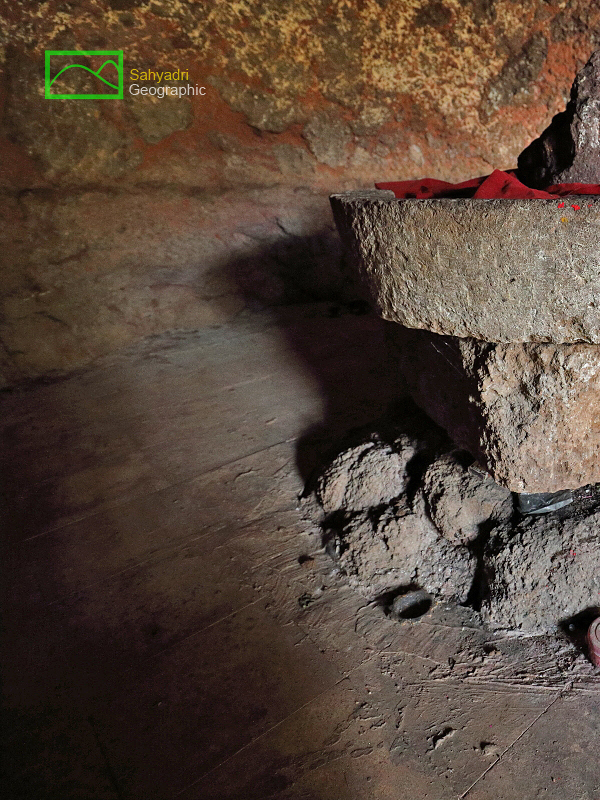 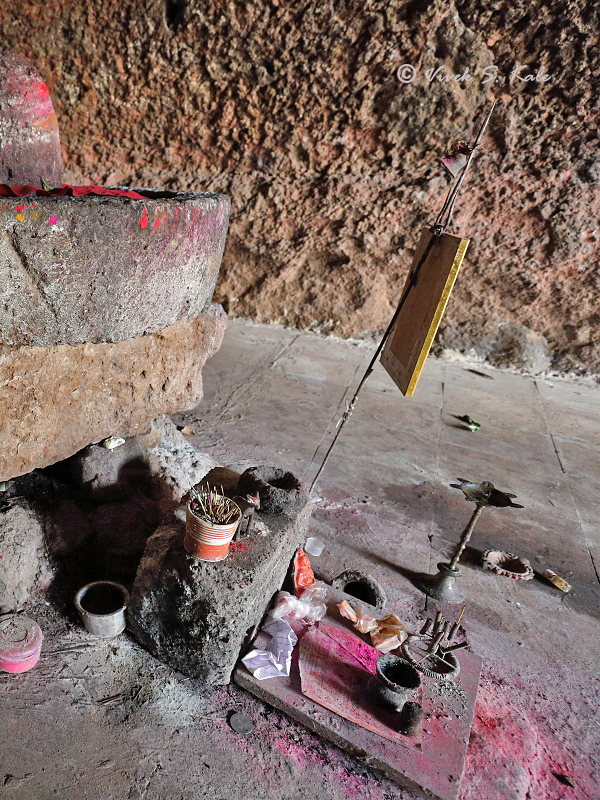 |
| |
| 21. Shivalingam atop under rubble Stupa, Digewadi Caves, Satara district, Maharashtra, India |
| |
|
|
| |
 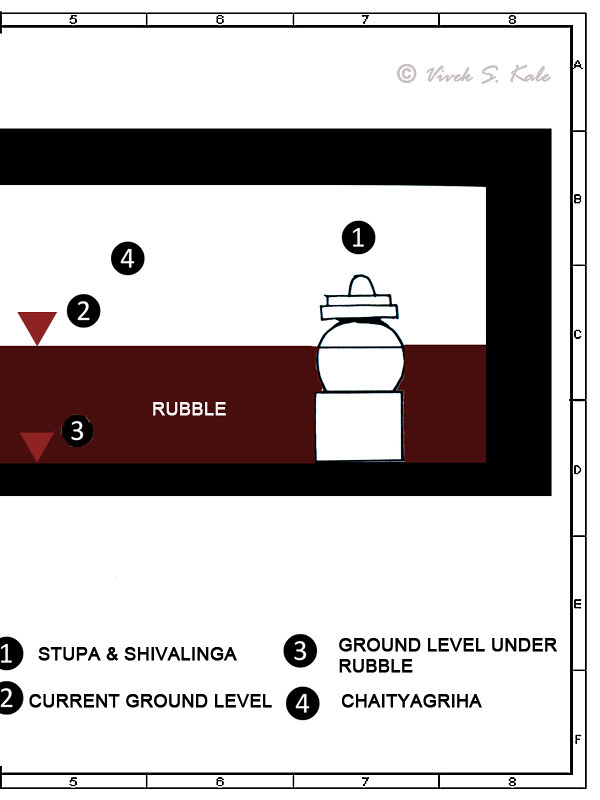 |
| |
| 22. Layout of chaityagriha considering the possible stupa under rubble, Digewadi Caves, Satara district, Maharashtra, India |
| |
|
|
| |
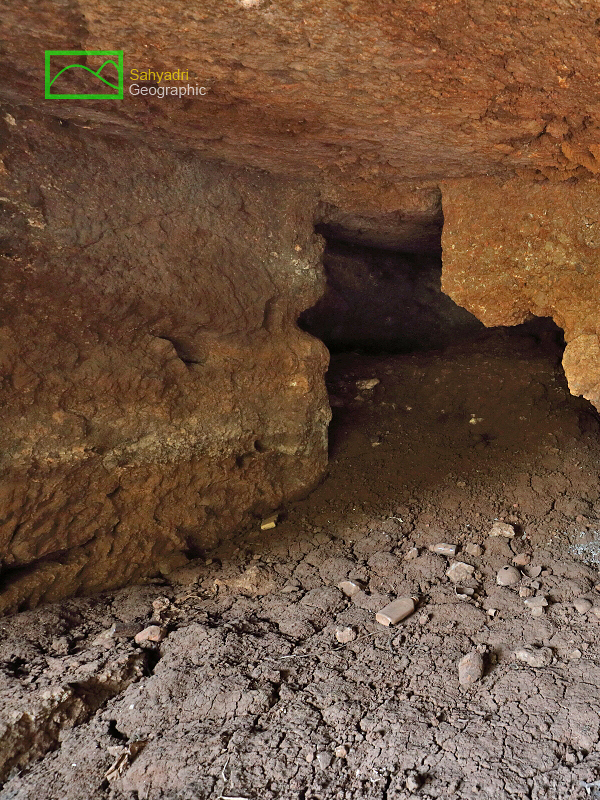 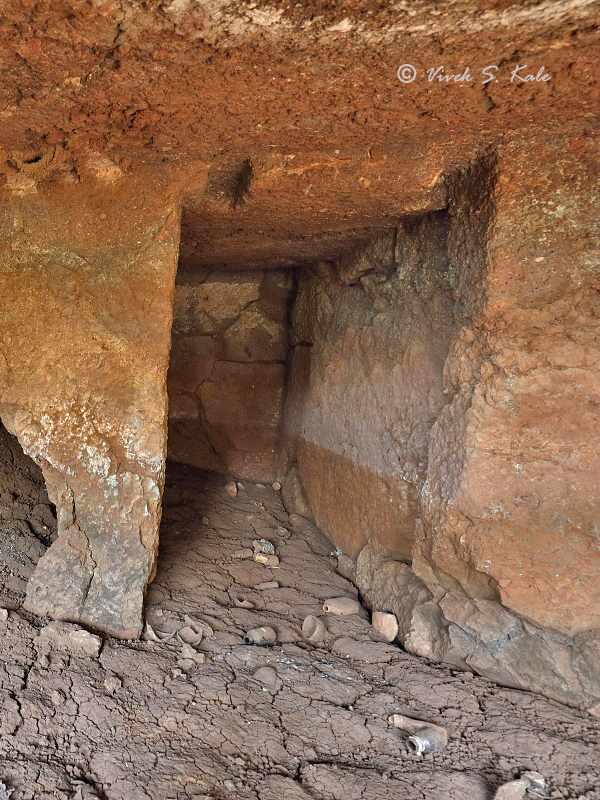 |
| |
| 23.West side Vihar, Digewadi Caves, Satara district, Maharashtra, India |
| |
|
|
| |
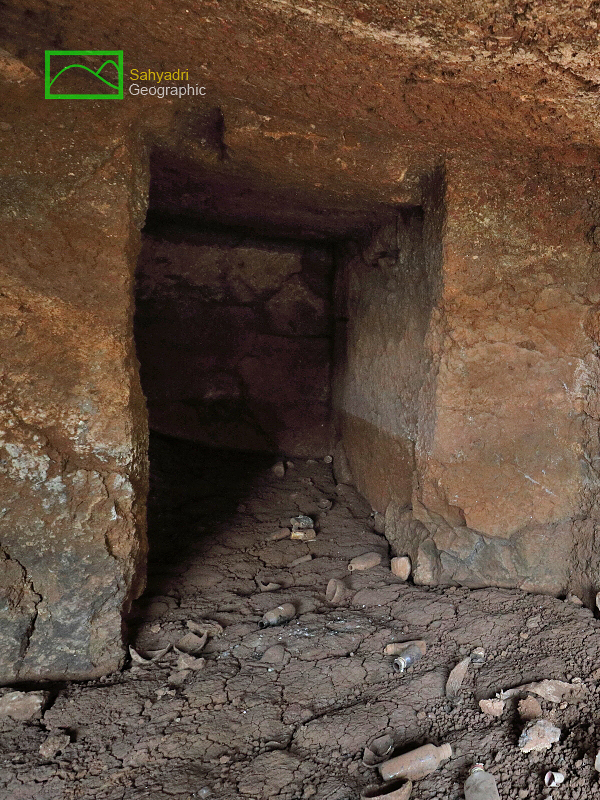 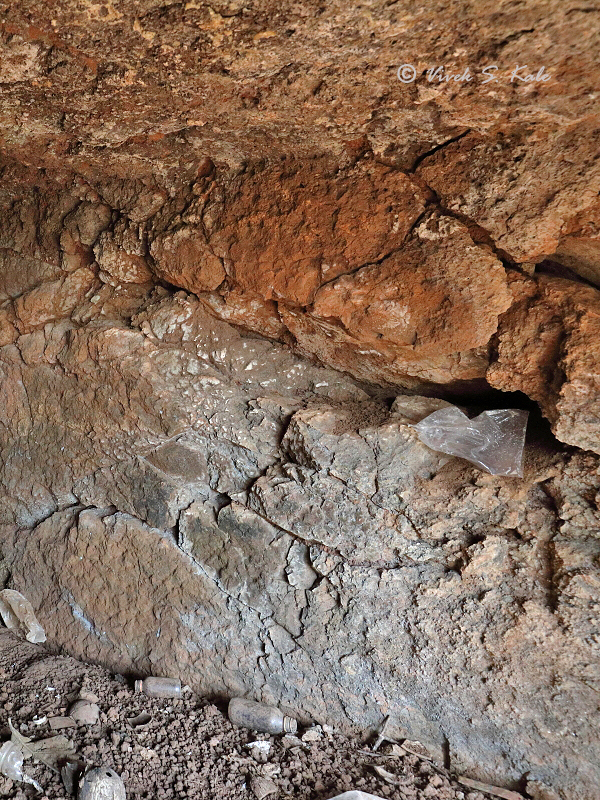 |
| |
| 24. West side Vihar, Digewadi Caves, Satara district, Maharashtra, India |
| |
|
|
चैत्यगृहाच्या डाव्या (पश्चिम ) बाजुला एक मोठा विहार आहे. विहारात एक पडवी आहे. पडवी च्या मागच्या बाजुला २ खोल्या आहेत. खोल्यांचे आकार समसमान नाहीत. दरवाजांना लाकडी चौकटी लावण्यासाठी लागणाऱ्या खाचा येथे दिसतात. विहाराला जाण्यासाठी एक दरवाजा आहे. सद्या विहारात सरपटत जावे लागते. याचा बहुसंख्य भाग जमिनीखाली दबलेला आहे. पुर्व आणि पश्चिम विहारांची सध्य छत पातळी वेगळी आहे. त्यांच्या जमिनीवरची पातळी सुद्धा वेगळी असावी. पावसा पाण्यामुळे भिंतींची पडझड झाली आहे. येथे बाहेर पाण्याचे टाके असणार. मात्रे ते जमिनीखाली दडलेले असणार. एकुणच सरकारी अनास्थेमुळे या २००० वर्षांपुर्वीच्या महत्वाच्या लेण्याची दुरावस्था झाली आहे.
|
|
On the left side of main chaityagriha, there is a cave with 2 cells at its back and a verandah infront of these 2 cells. Similar to the main chaityagriha, this cave also is filled with about 1 to 1.2 meter rubble. Benches in these cave cells are not visible due to rubble. The ceiling of this cave matches with the current level of the Chaityagriha floor. Assuming that the typical height of the caves in this region is about 2 to 2.4 meter, one can say that Chaityagriha is further 2.4 meter below the rubble, making the total height of Chaityagriha as 2.2 meter (visible) + 2.4 meter (under rubble) = 4.6 meter. The wooden sockets to fix the door frames can be seen in the door ways of these 2 cells.
|
|
|
| |
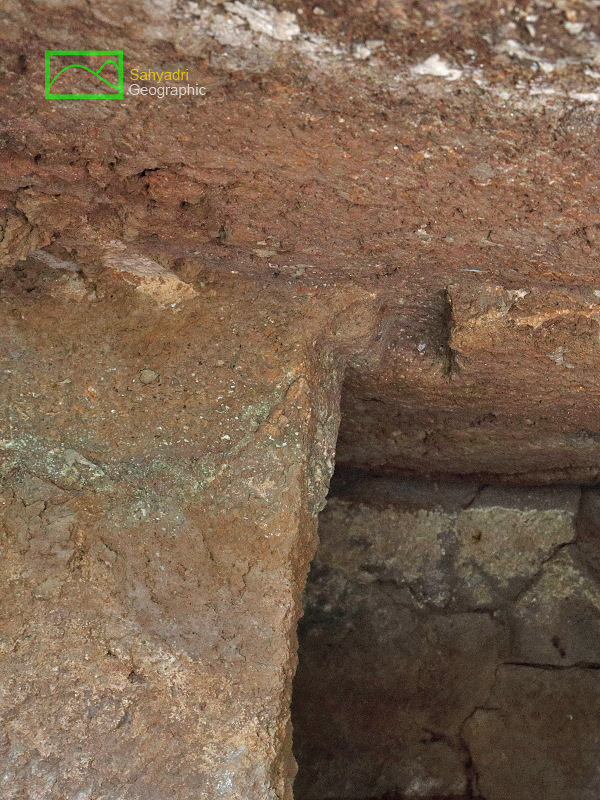 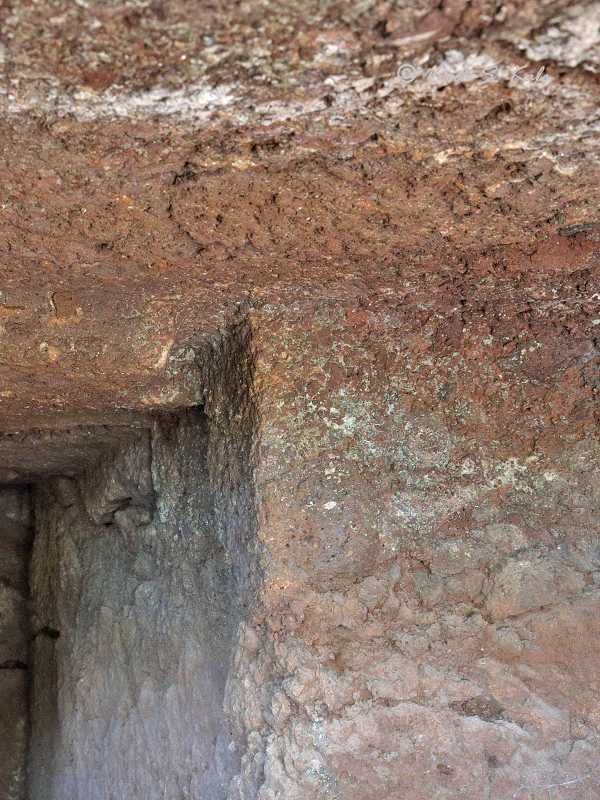 |
| |
| 25. West side Vihar, Digewadi Caves, Satara district, Maharashtra, India |
| |
|
|
| |
  |
| |
| 26. West side Vihar, Digewadi Caves, Satara district, Maharashtra, India |
| |
|
|
| |
  |
| |
| 27. West side Vihar, Digewadi Caves, Satara district, Maharashtra, India |
| |
|
|
| |
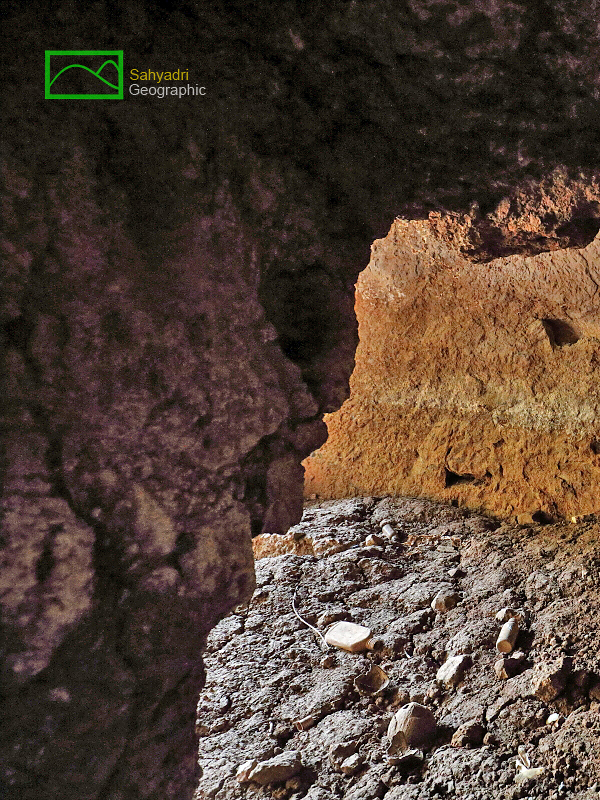 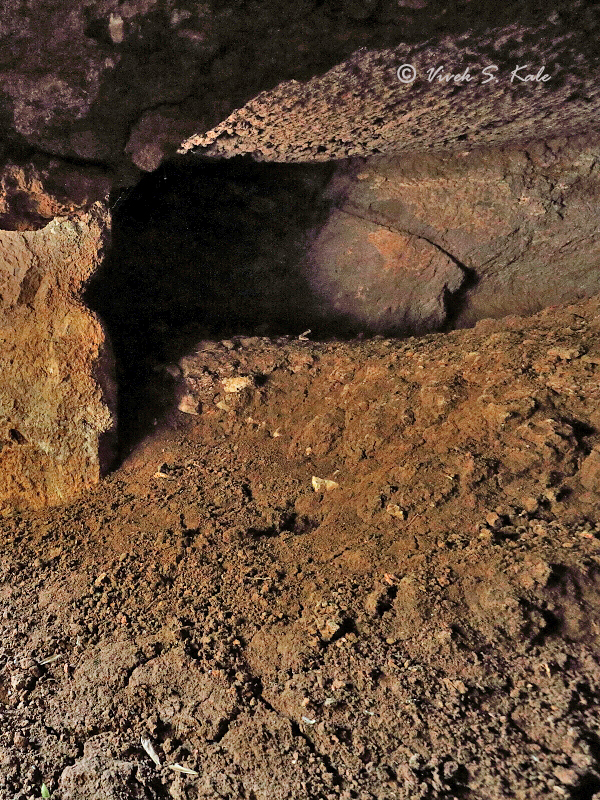 |
| |
| 28. West side Vihar, Digewadi Caves, Satara district, Maharashtra, India |
| |
|
|
| |
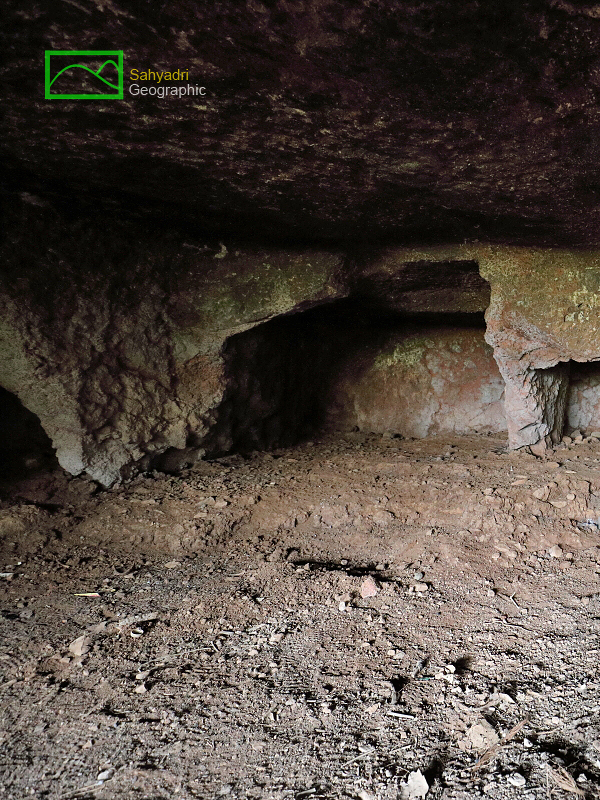 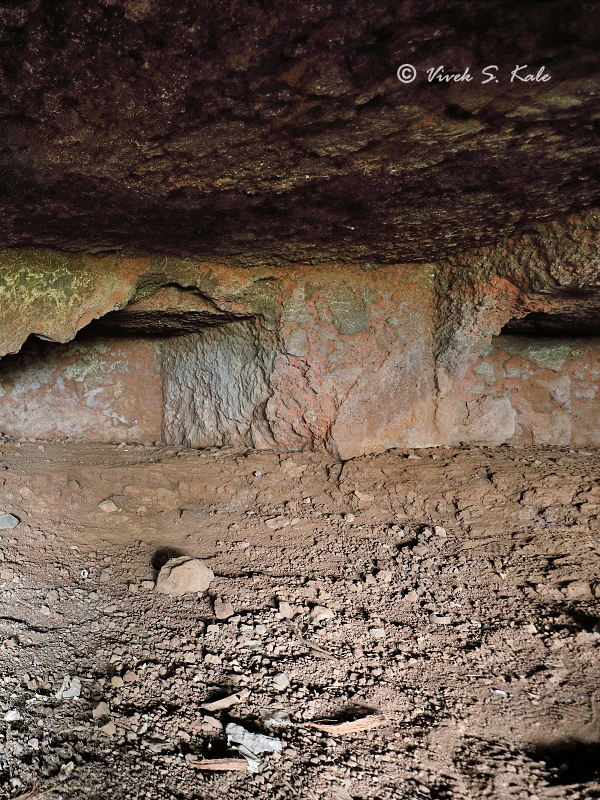 |
| |
| 29. East Vihar, Digewadi Caves, Satara district, Maharashtra, India |
| |
|
|
| |
 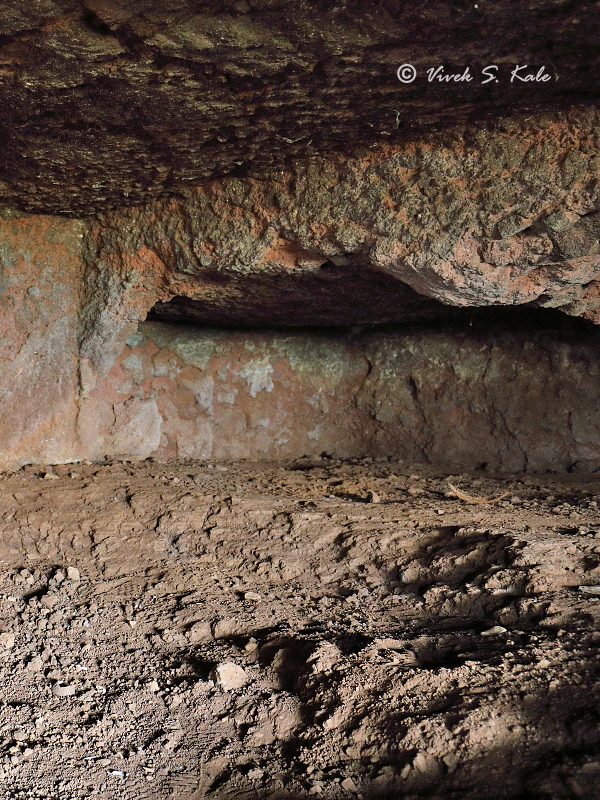 |
| |
| 30. East Vihar, Digewadi Caves, Satara district, Maharashtra, India |
| |
|
|
चैत्यगृहाच्या उजव्या बाजुला एक मोठा विहार आहे. विहारात मध्यभागी एक सभागृह आहे. सभागृहाच्या भोवती खोल्या आहेत. सर्व खोल्यांचे आकार समसमान नाहीत. दरवाजांना लाकडी चौकटीलावण्यासाठी लागणाऱ्या खाचा येथे दिसतात. विहाराच्या डाव्या (पश्चिम) बाजुला २ खोल्या, मागच्या बाजुला २ खोल्या तर पुर्व बाजुस ३ खोल्या आहेत. विहाराला जाण्यासाठी चैत्यगृहात उजवीकडे एक दरवाजा केला आहे. सद्या विहारात सरपटत जावे लागते. याचा बहुसंख्य भाग जमिनीखाली दबलेला आहे. पुर्व आणि पश्चिम विहारांची सध्य छत पातळी वेगळी आहे. त्यांच्या जमिनीवरची पातळी सुद्धा वेगळी असावी. पुर्व विहारात समोरुन सुद्धा वाट असावी.
पावसा पाण्यामुळे भिंतींची पडझड झाली आहे. येथे बाहेर पाण्याचे टाके असणार. मात्रे ते जमिनीखाली दडलेले असणार. एकुणच सरकारी अनास्थेमुळे या २००० वर्षांपुर्वीच्या महत्वाच्या लेण्याची दुरावस्था झाली आहे.
|
|
On the right side (East) of main chaityagriha, there is a cave with 7 cells. Two cells are on left, two on the back side and 3 on right side. Similar to the main chaityagriha, this cave also is filled with about 1 to 1.2 meter rubble. Benches in these cave cells are not visible due to rubble. The cave cell sizes are non uniform. There is a opening in the cahityagriha wall to enter this cave. There is a small passage through which one can reach the caves once entered through the chaityagriha opening. Due to rubble it is difficult to identify if the cave complex also had front entrance or not. There are no indications of water cistern nearby. But there is a likely hood that water cisterns are under the rubble. This east cave ceiling is above the current floor level of Chaityagriha by about 1 meter. It indicates that the floor level of Cave (west) and floor level of Cave (East) differs by about 1 meter. The wooden sockets to fix the door frames can be seen in the door ways of these 7 cells. The cave is being overlooked by Govt agencies. The restoration of such important ancient heritage should have been done by Govt.
|
|
|
| |
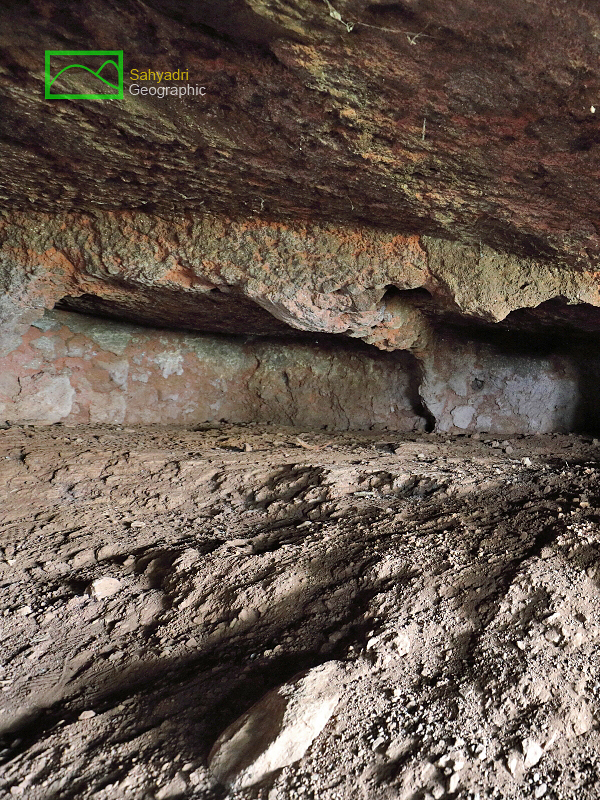 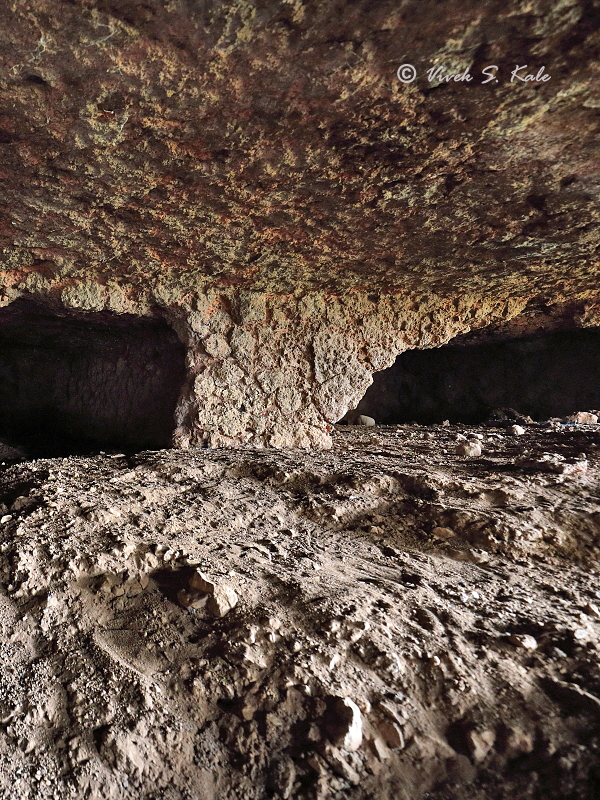 |
| |
| 31. East Vihar, Digewadi Caves, Satara district, Maharashtra, India |
| |
|
|
| |
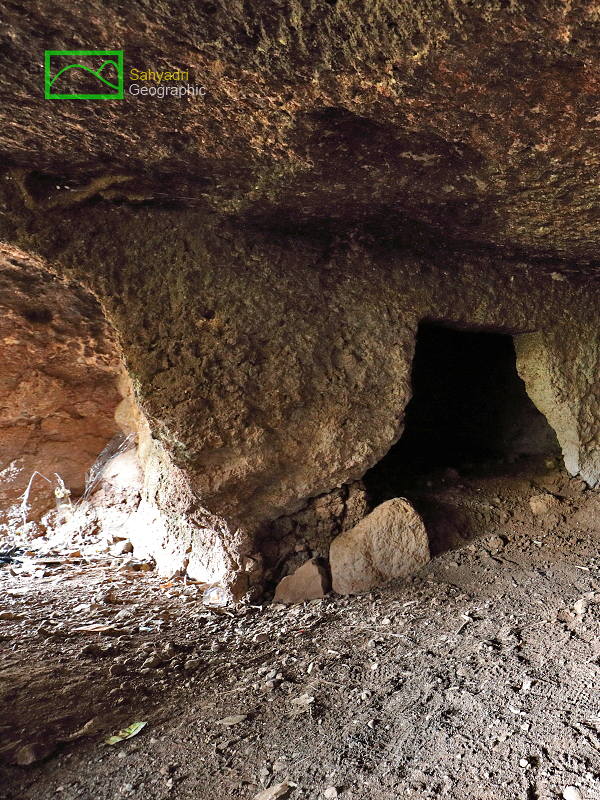 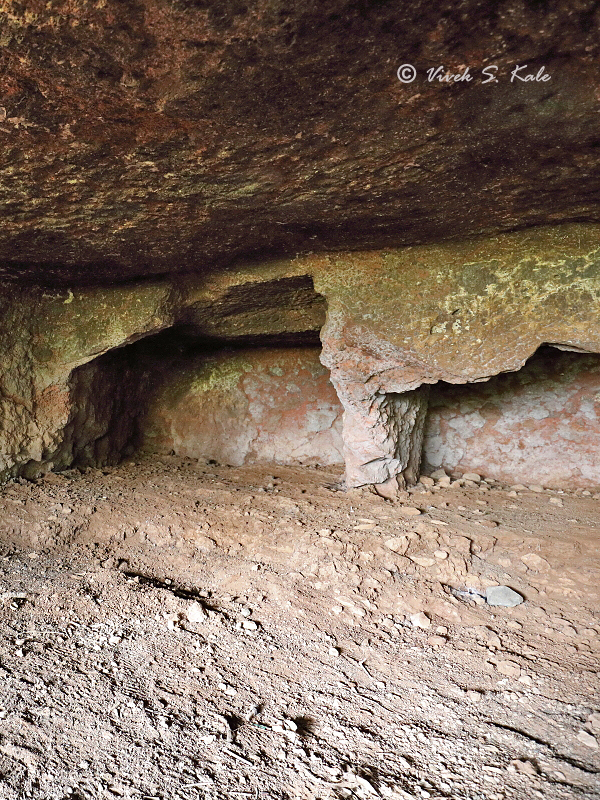 |
| |
| 32. East Cave, Digewadi Caves, Satara district, Maharashtra, India |
| |
|
|
| |
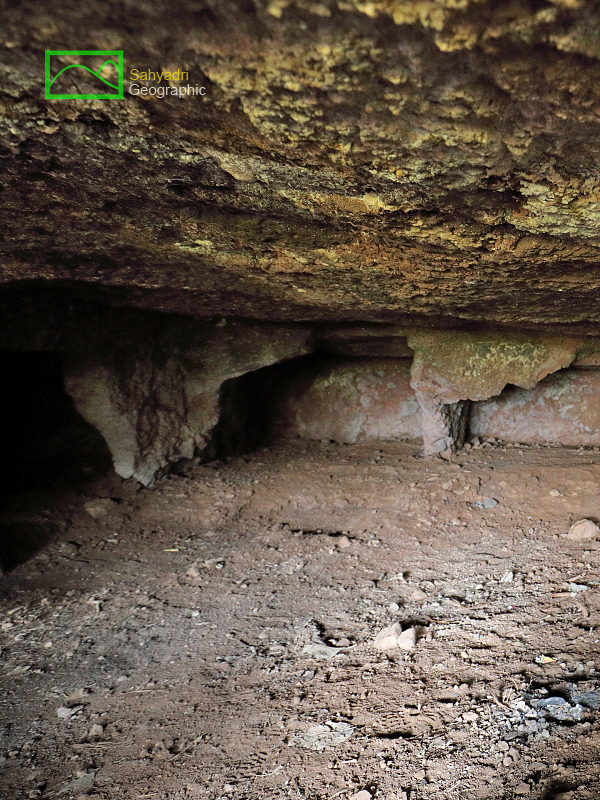 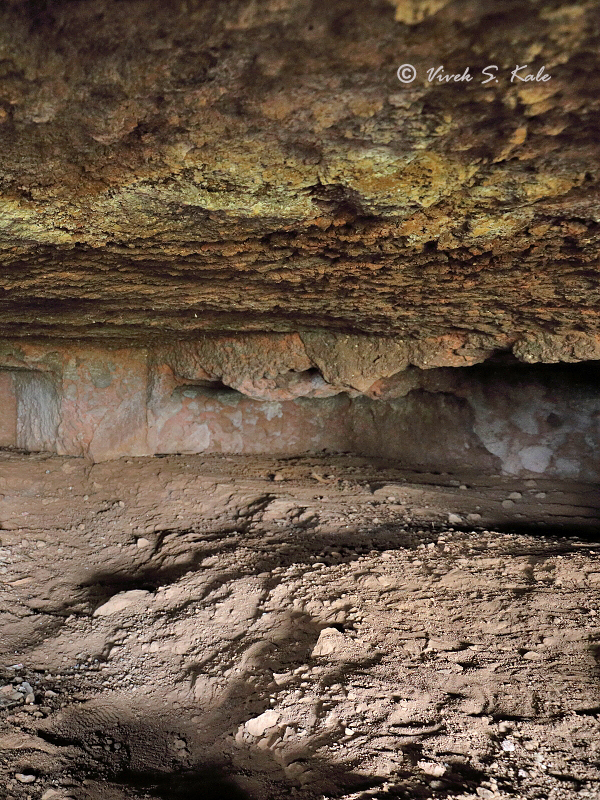 |
| |
| 33. East Vihar, Digewadi Caves, Satara district, Maharashtra, India |
| |
|
|
| |
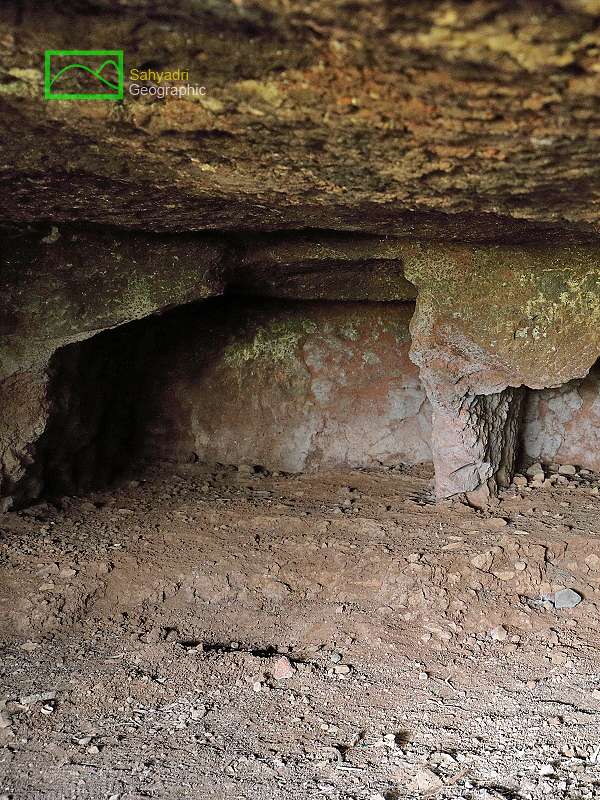 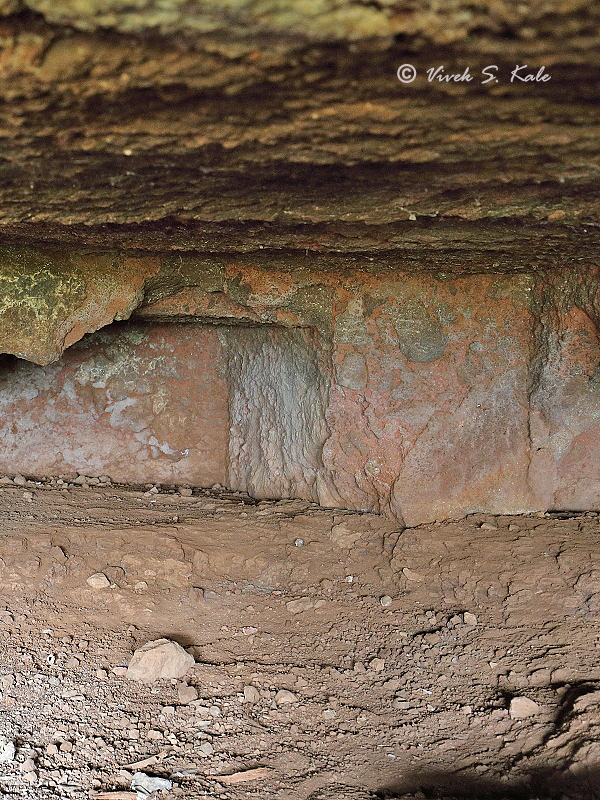 |
| |
| 34. East Vihar, Digewadi Caves, Satara district, Maharashtra, India |
| |
|
|
| |
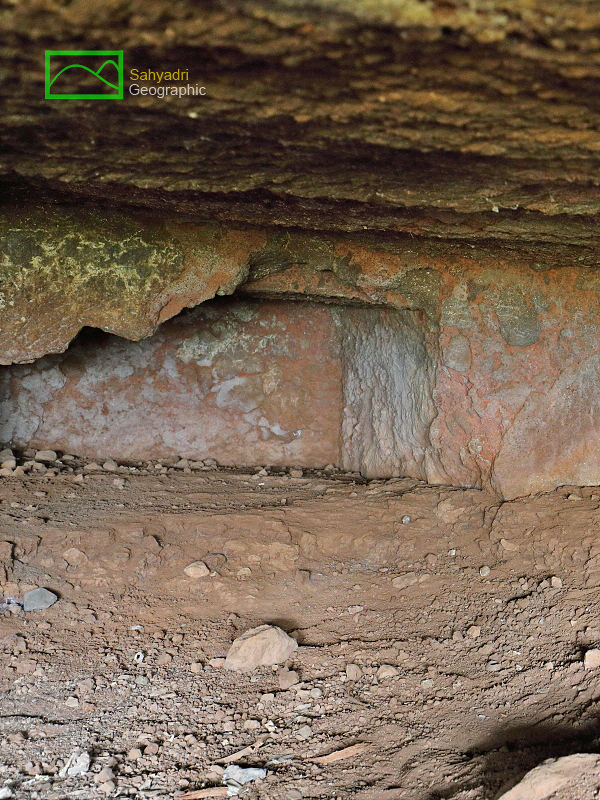 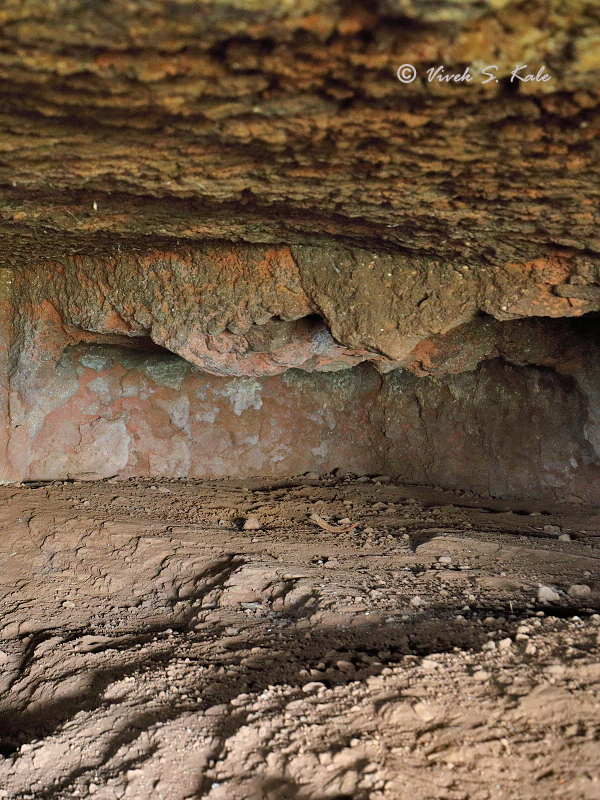 |
| |
| 35. East Vihar, Digewadi Caves, Satara district, Maharashtra, India |
| |
|
|
| |
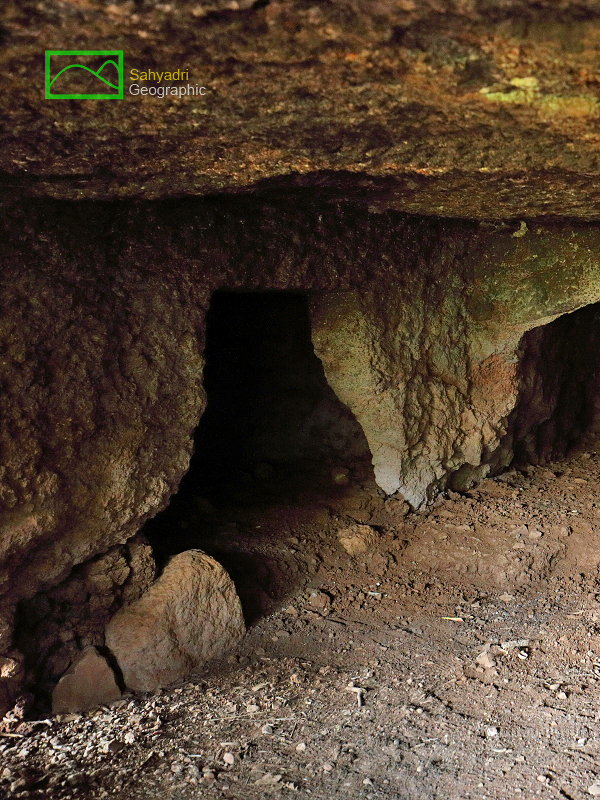 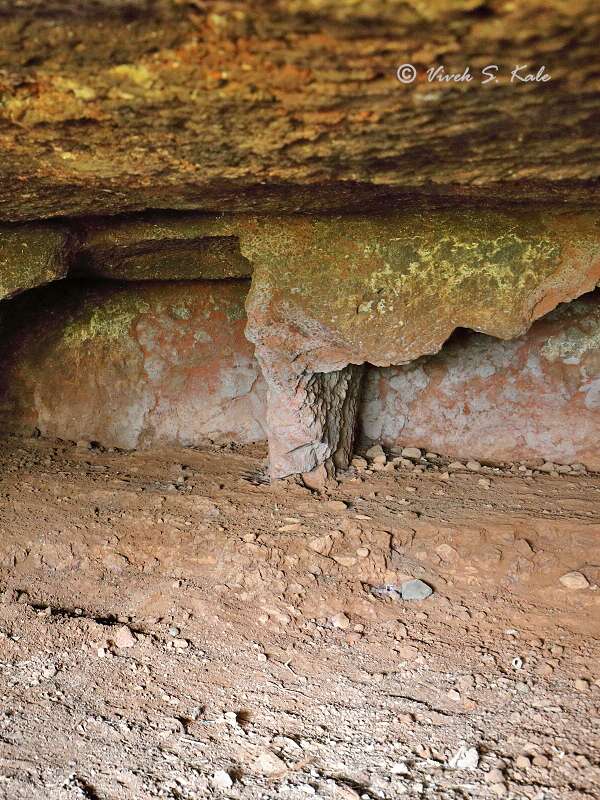 |
| |
| 36. East Cave, Digewadi Caves, Satara district, Maharashtra, India |
| |
|
|
| |
 |
| |
| 37. Digewadi Caves, Satara district, Maharashtra, India |
| |
|
|
| |
 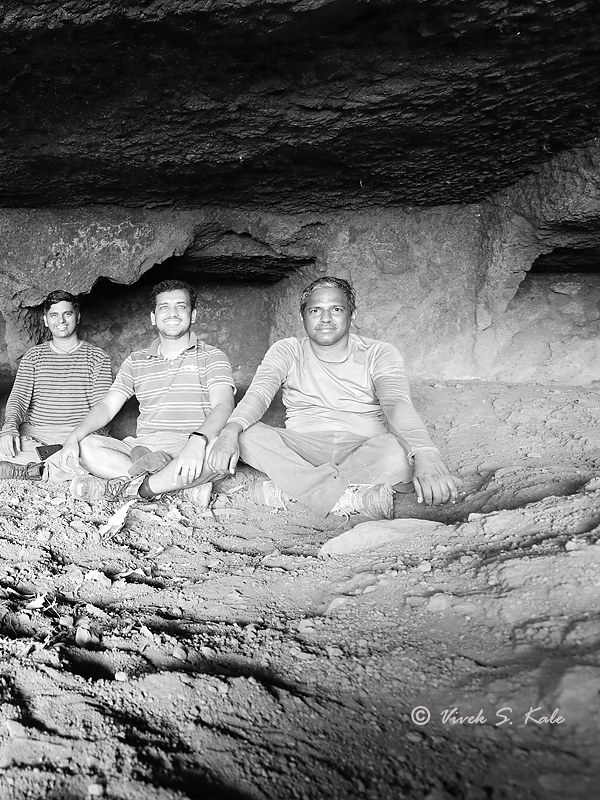 |
| |
| 38. Pilgrims, Digewadi Caves, Satara district, Maharashtra, India |
| |
|
|
| |
 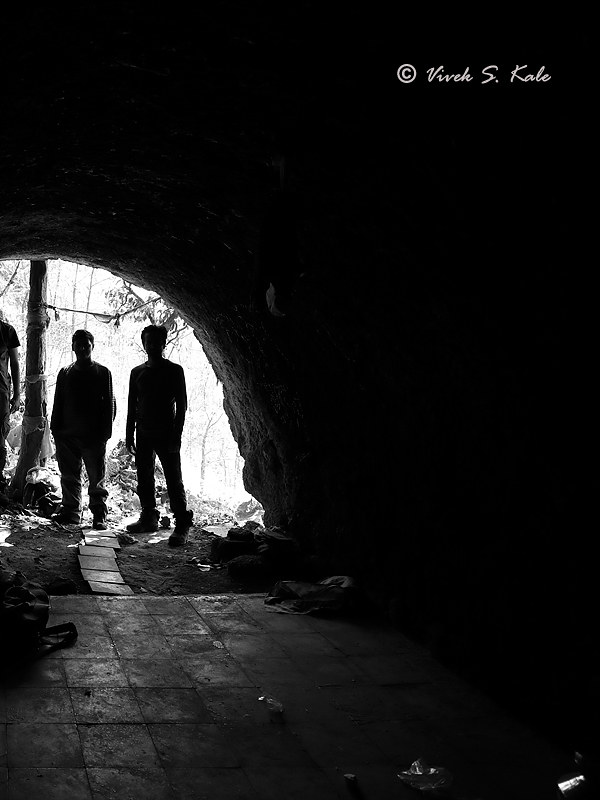 |
| |
| 39. Pilgrims, Digewadi Caves, Satara district, Maharashtra, India |
| |
|
|
| |
 |
| |
|
|
References :
1. Cave temples of India, London, 1880, Fergusson James and Burgess James.
2. Gazetters of Bombay Presidency, Satara District, Volume XVIII, 1885.
3. Buddhist architecture of western India, 1981, S. Nagraju.
4. Caitya Halls: Evidence of a Rock-Cut Architectural Tradition in the Vicinity of Karāḍ, Southern
Mahārāṣṭra, David Efurd, 2006
5. Late Hinayan Caves of western India - M.K. Dhavalikar, 1984
|
| |
|
|
| |
|

















































































